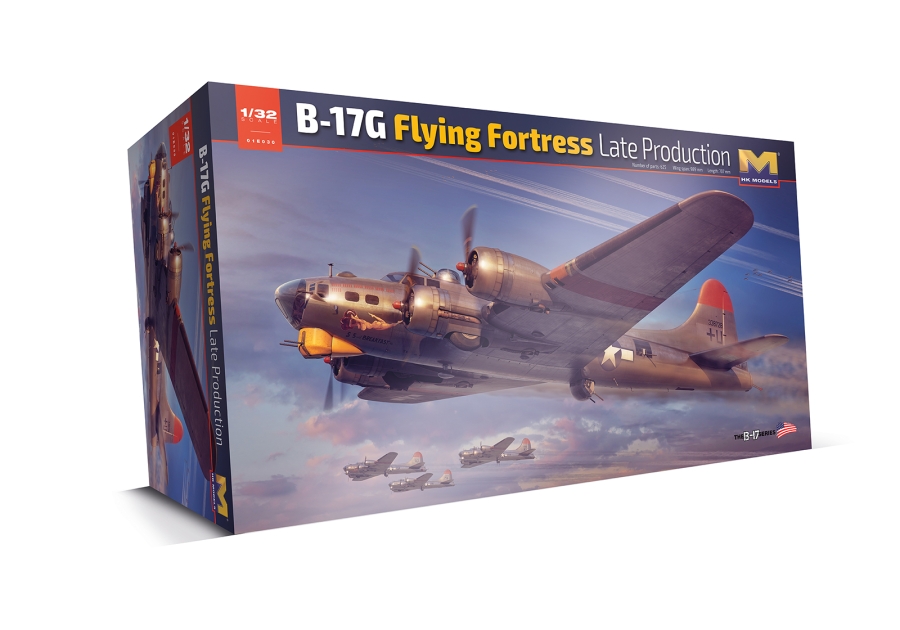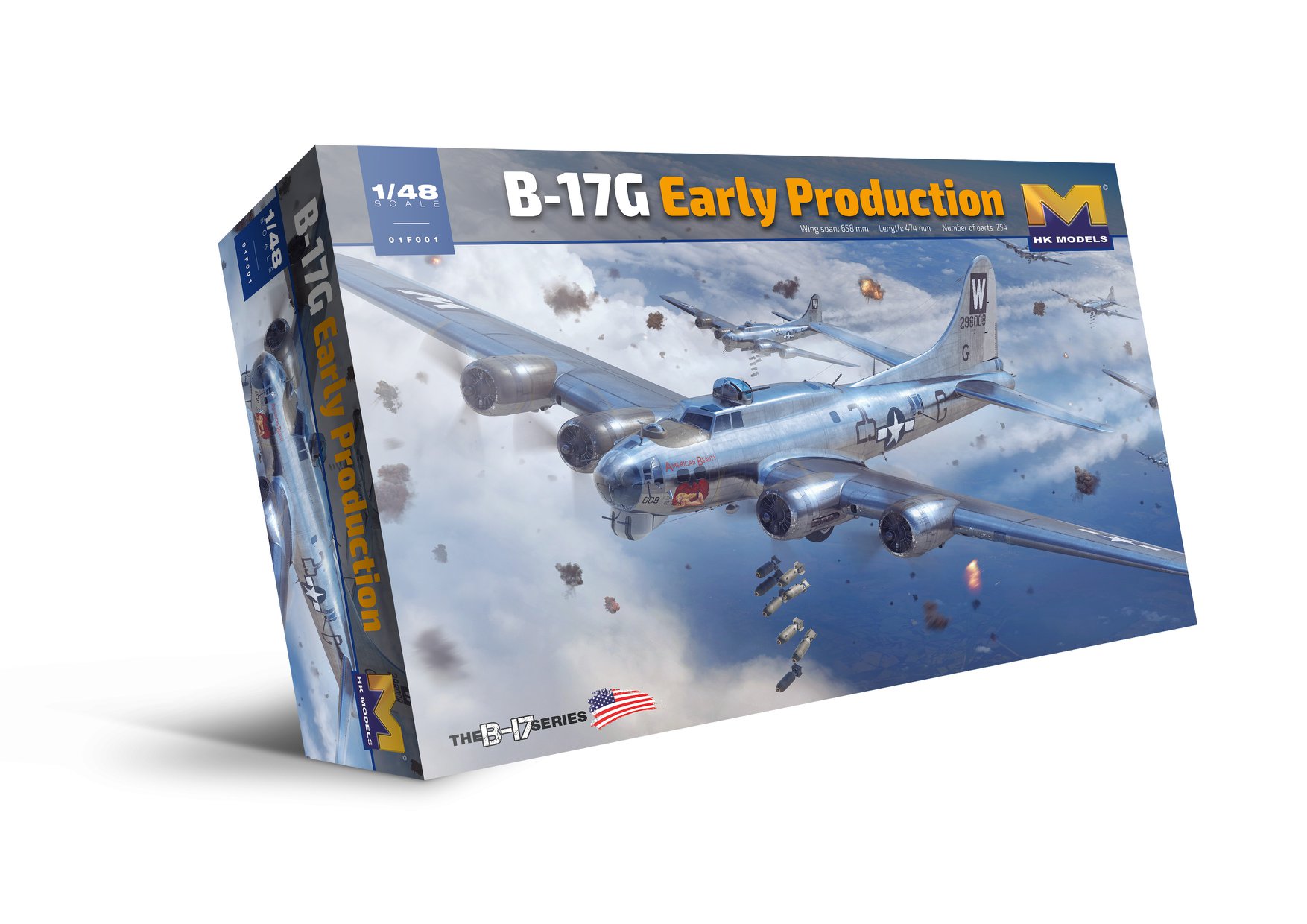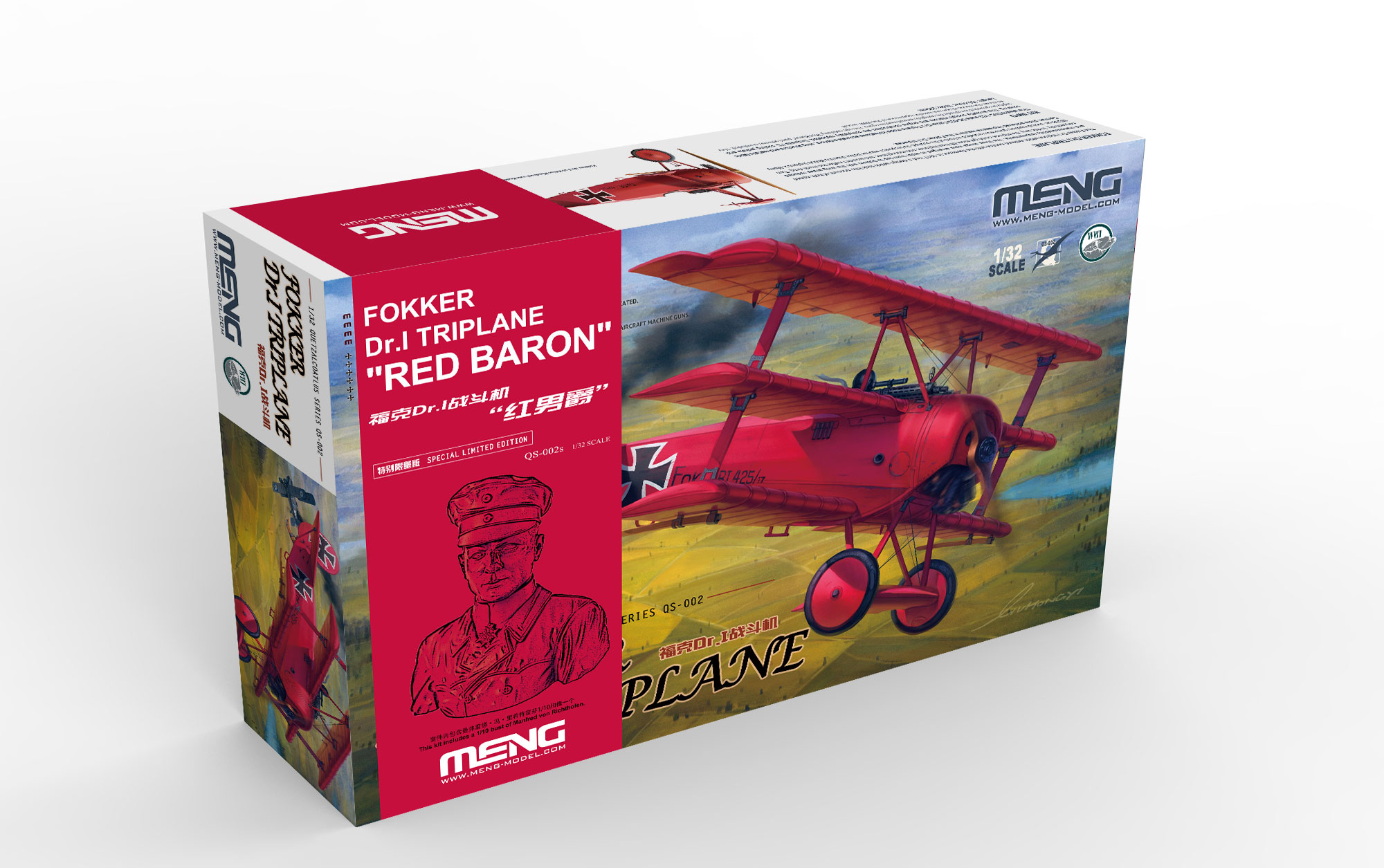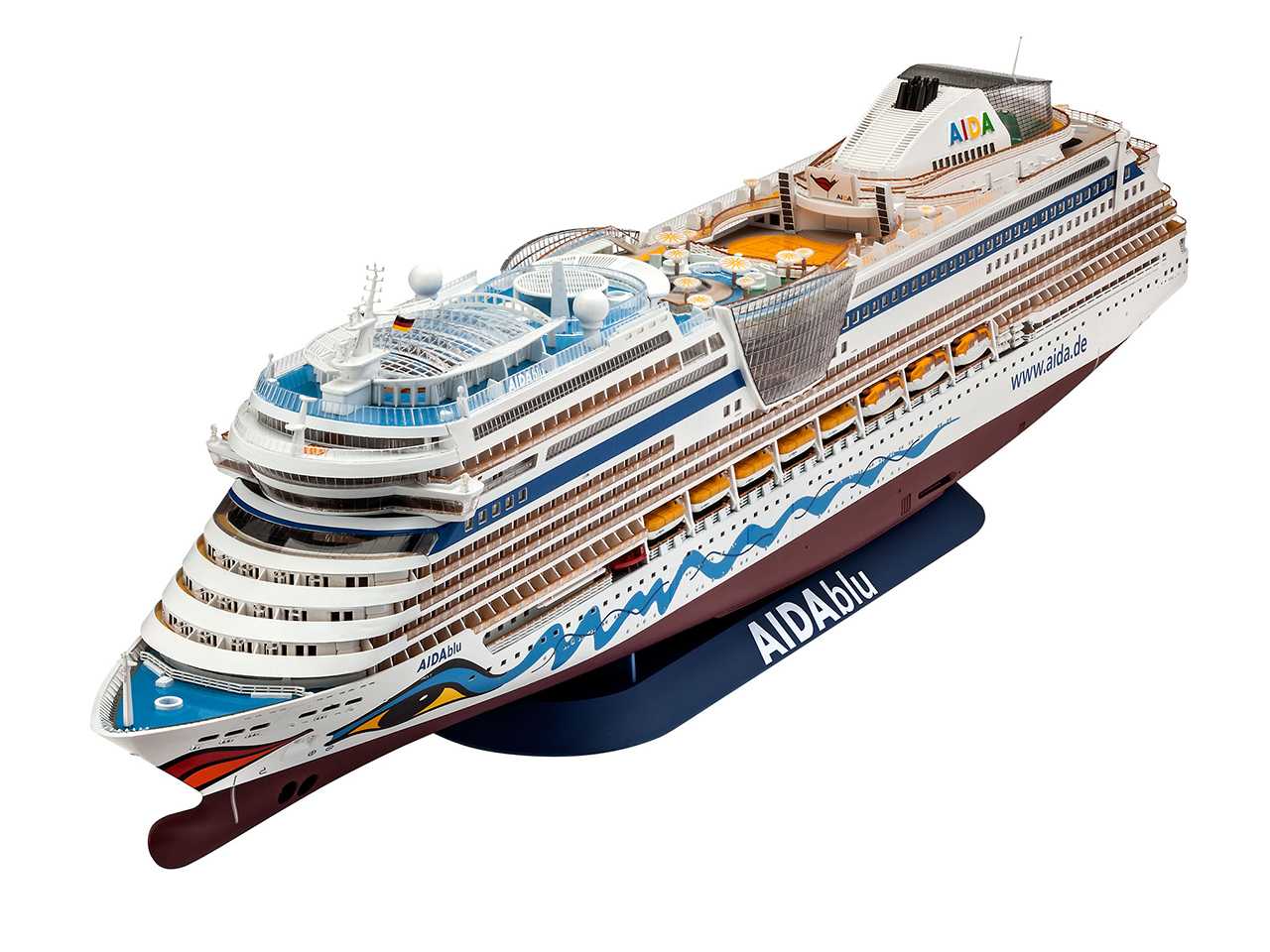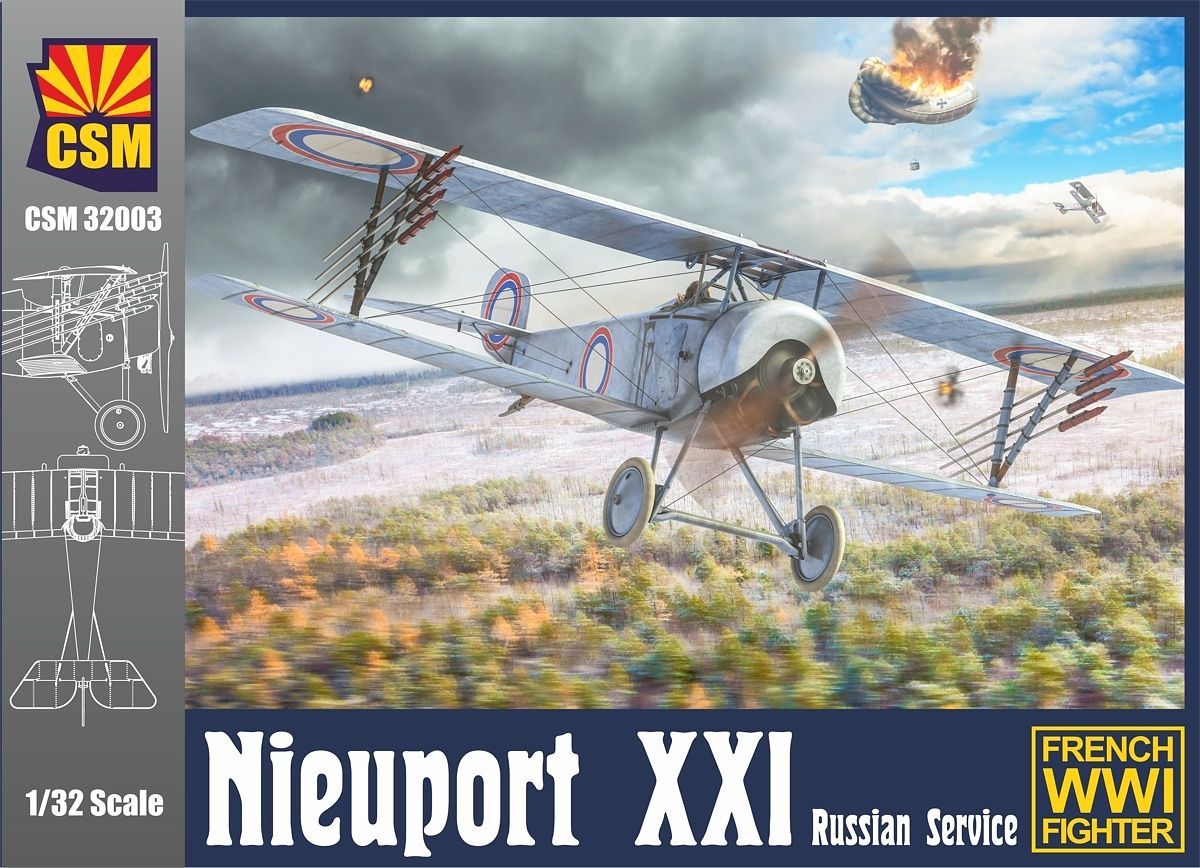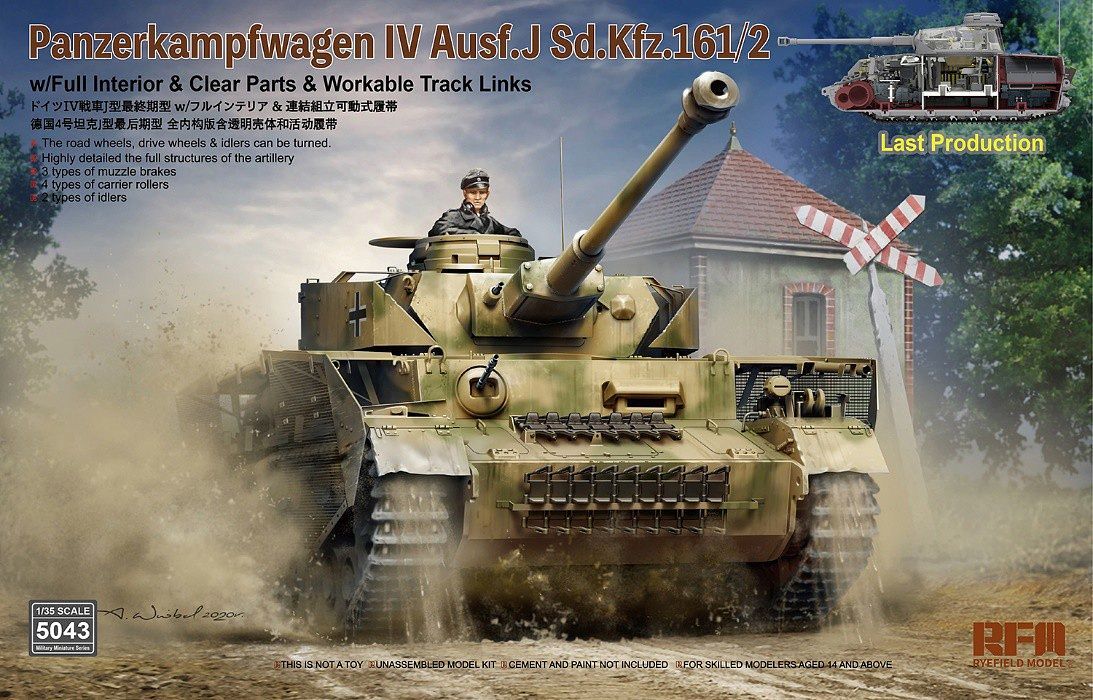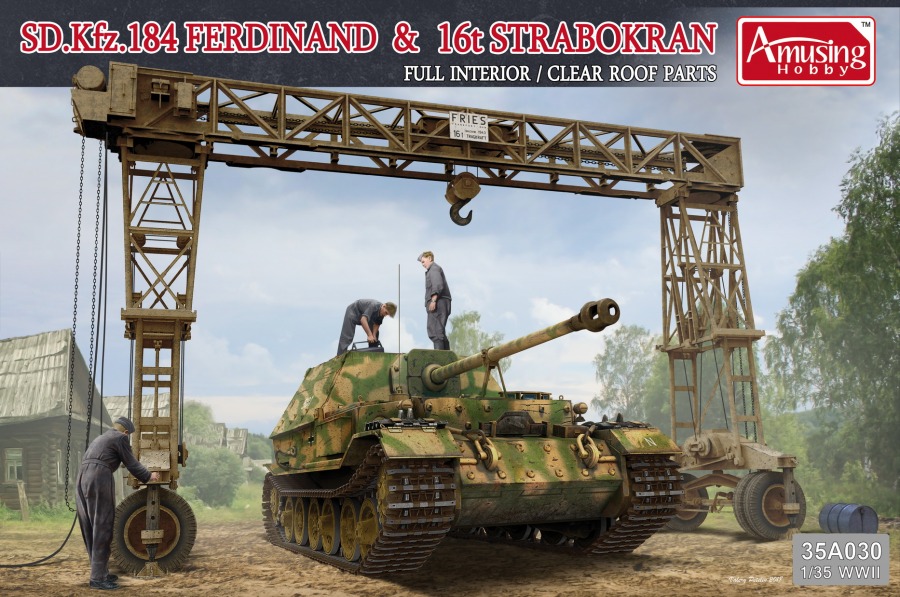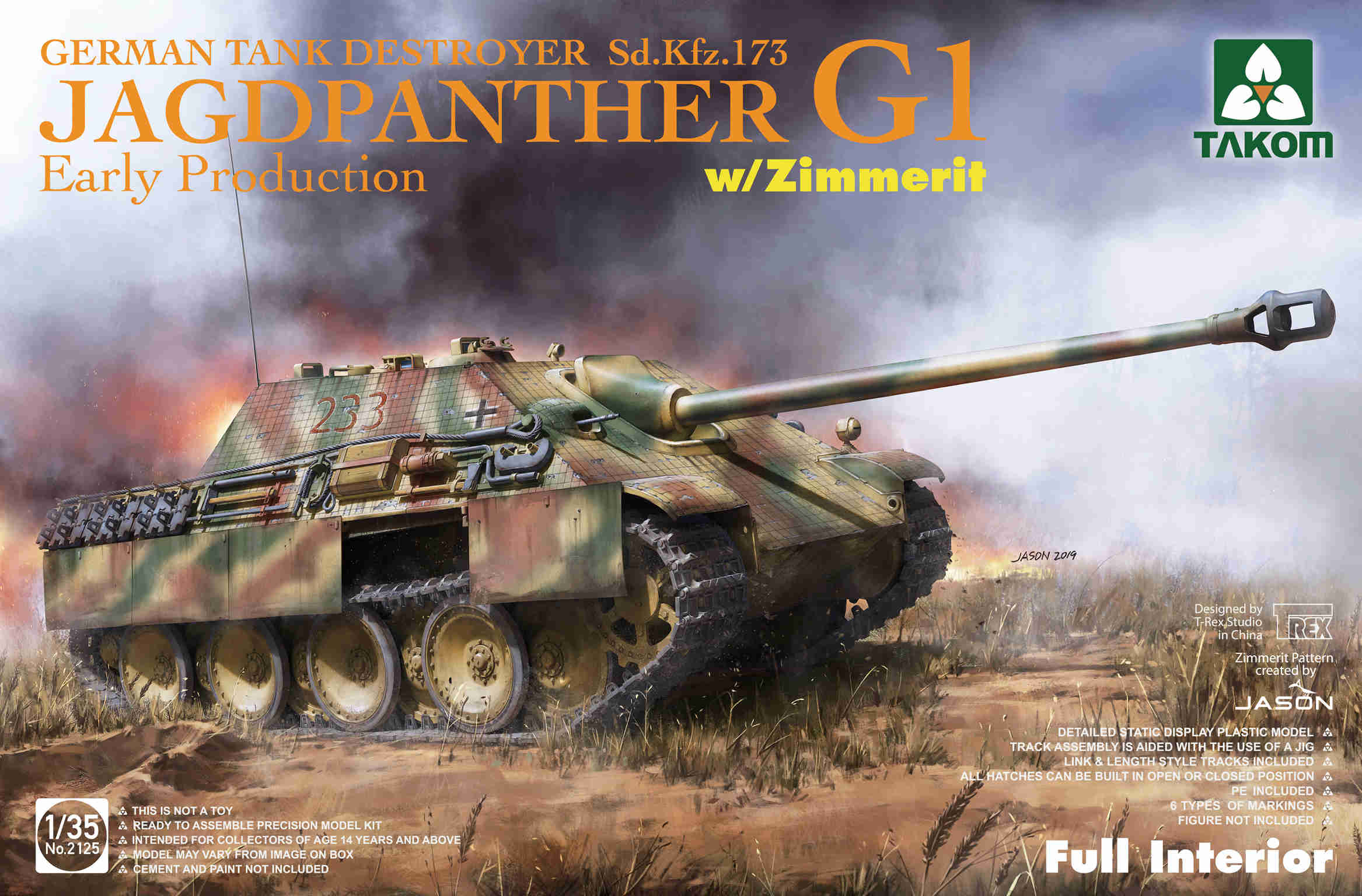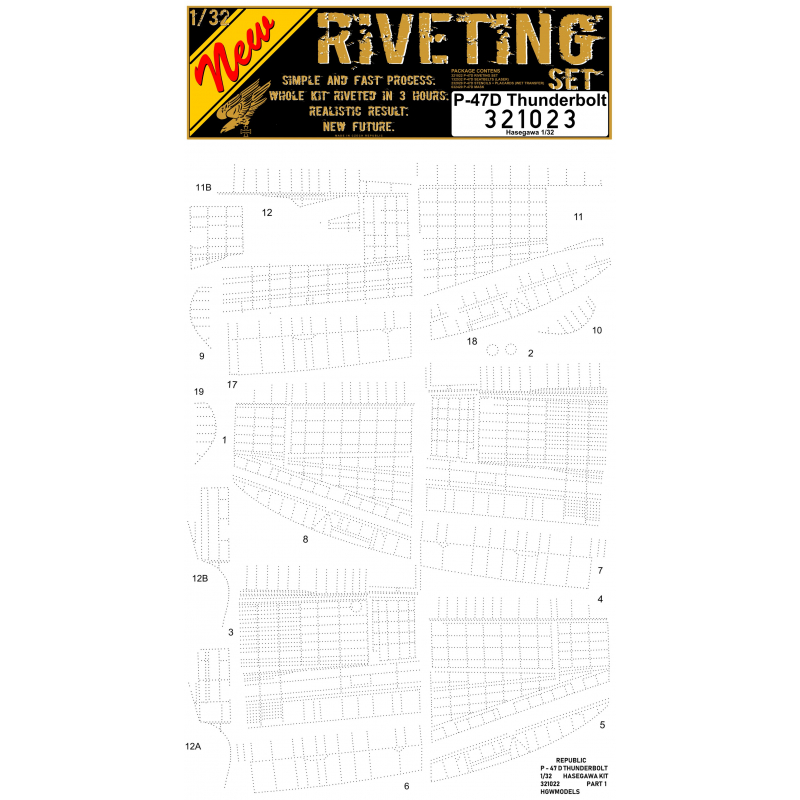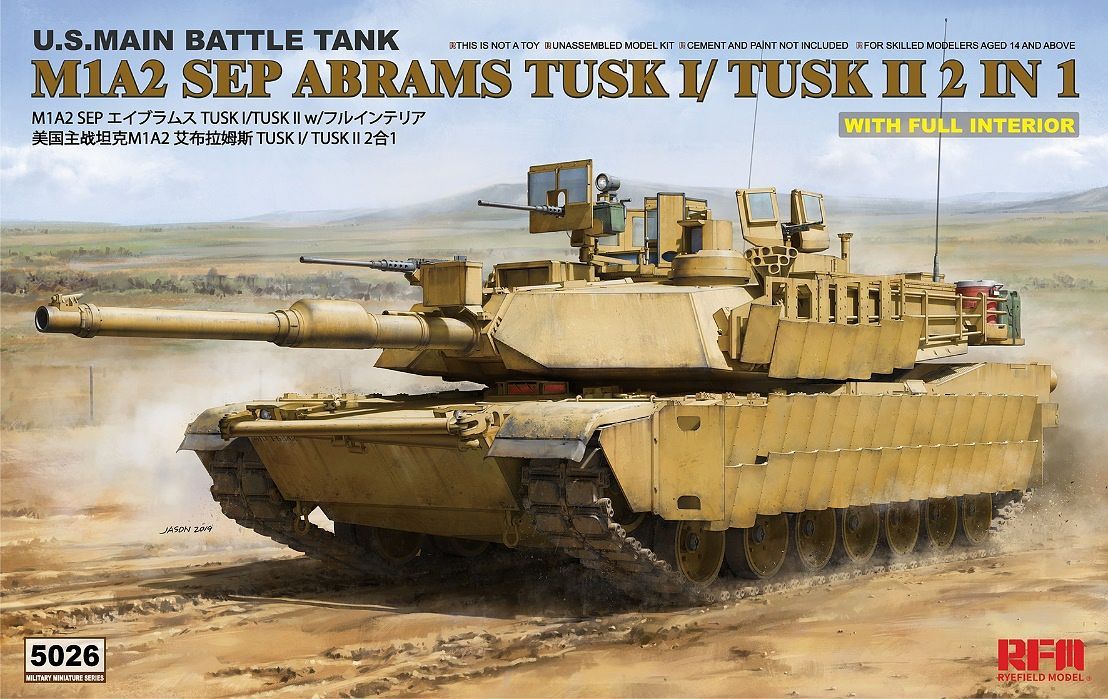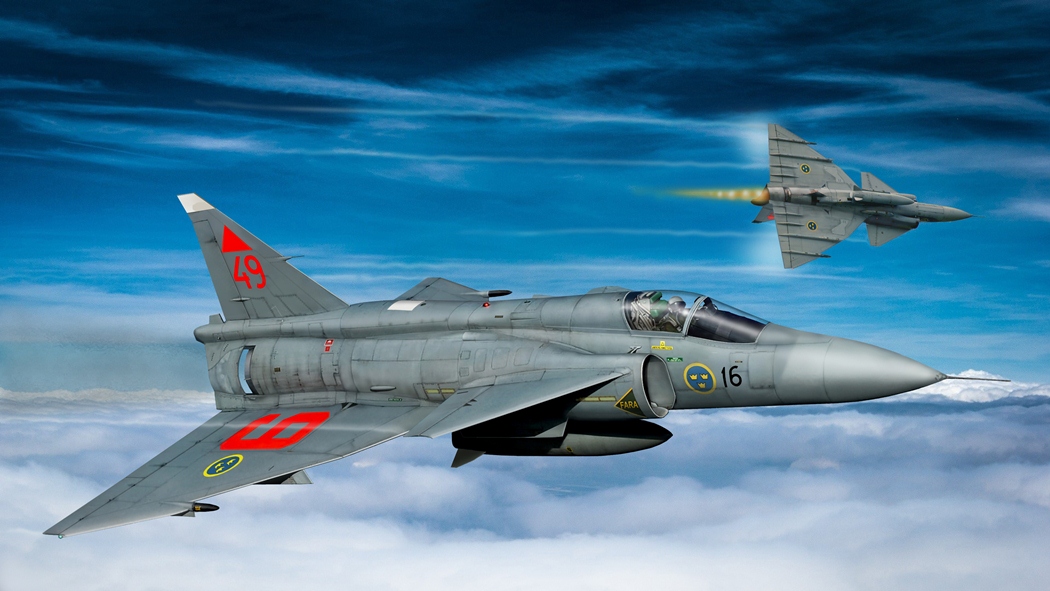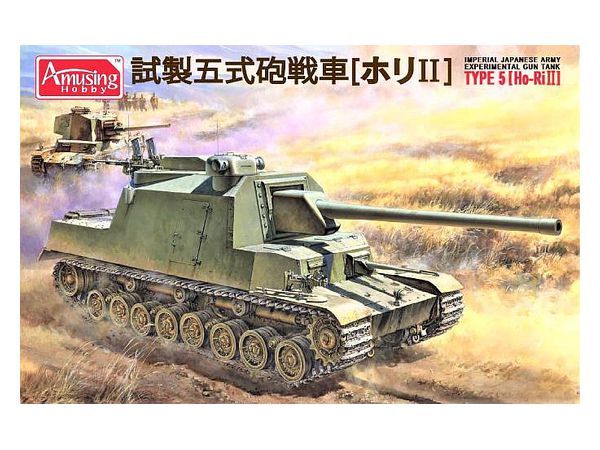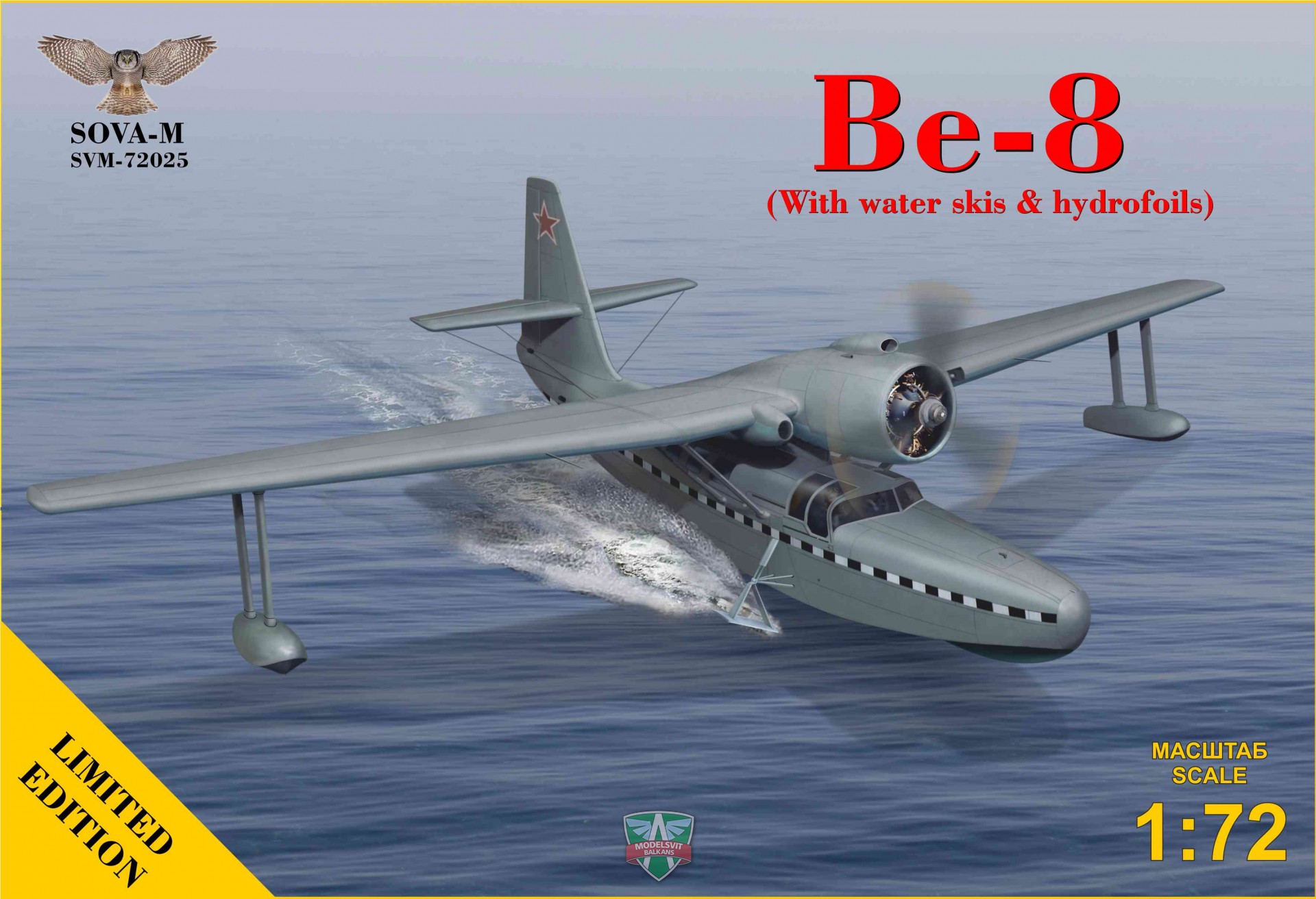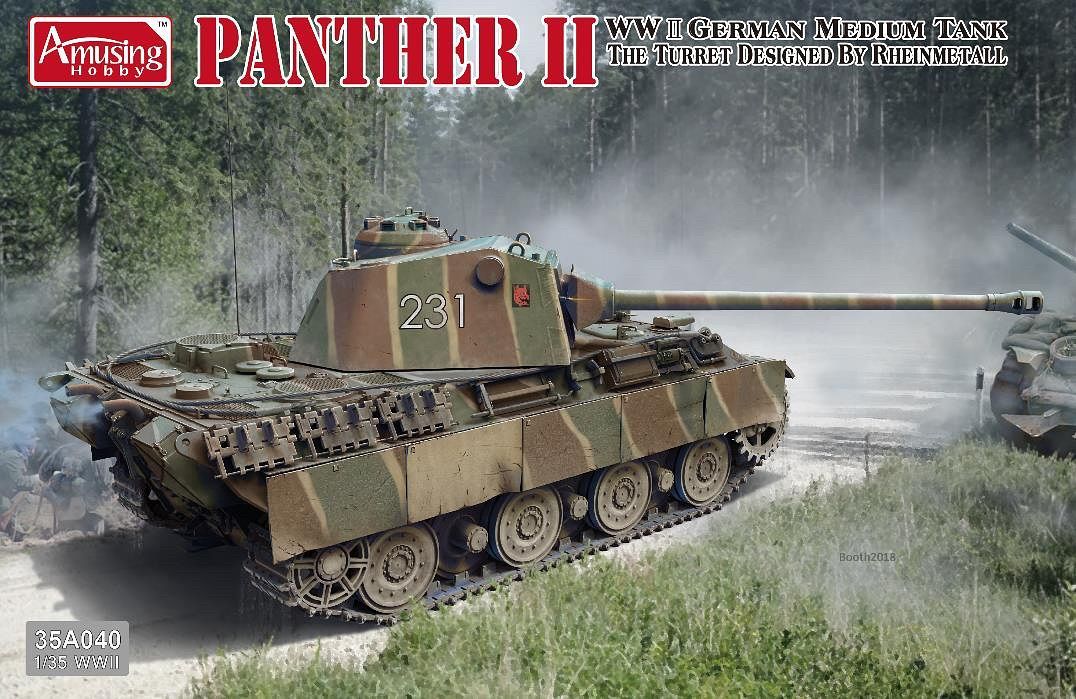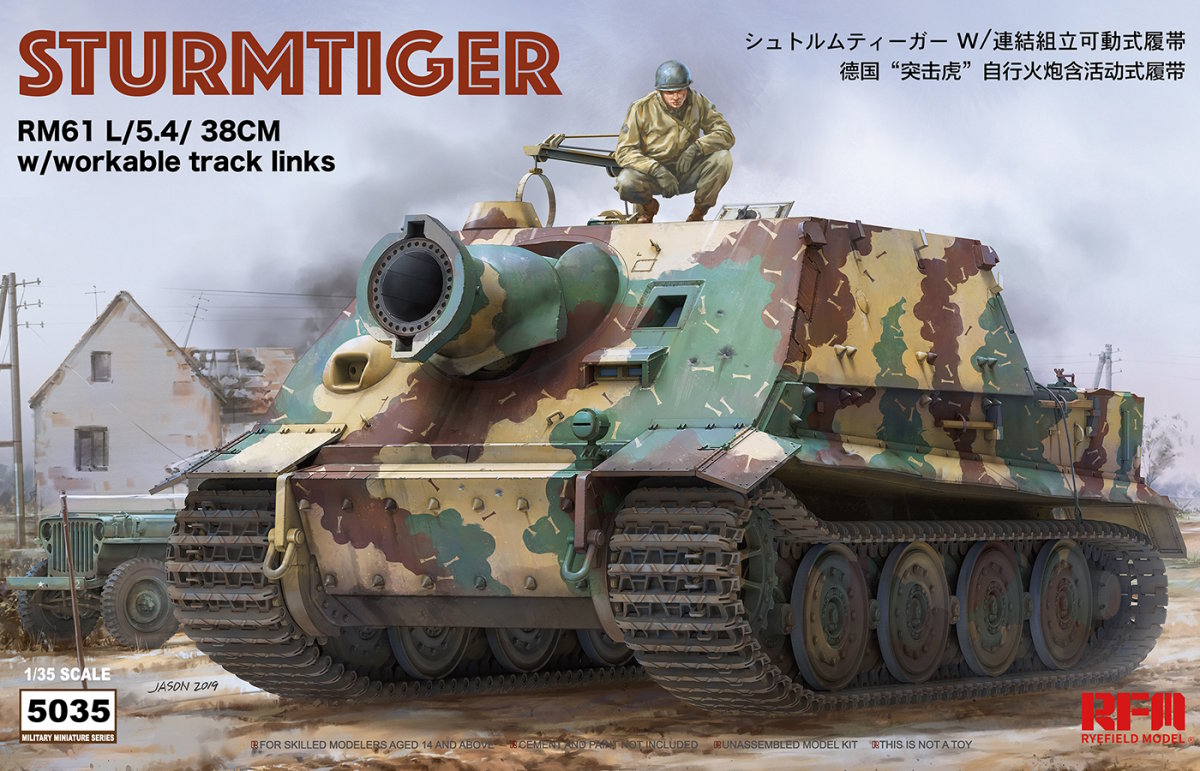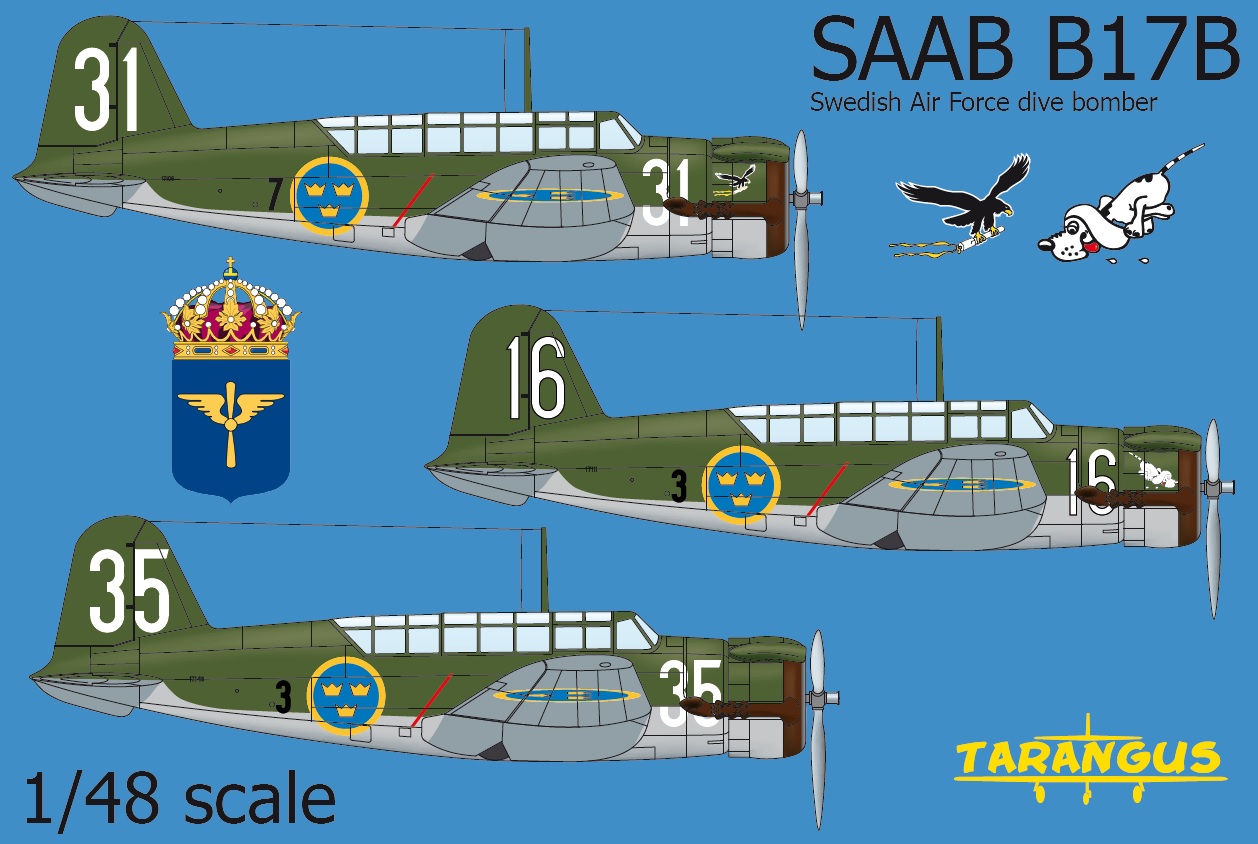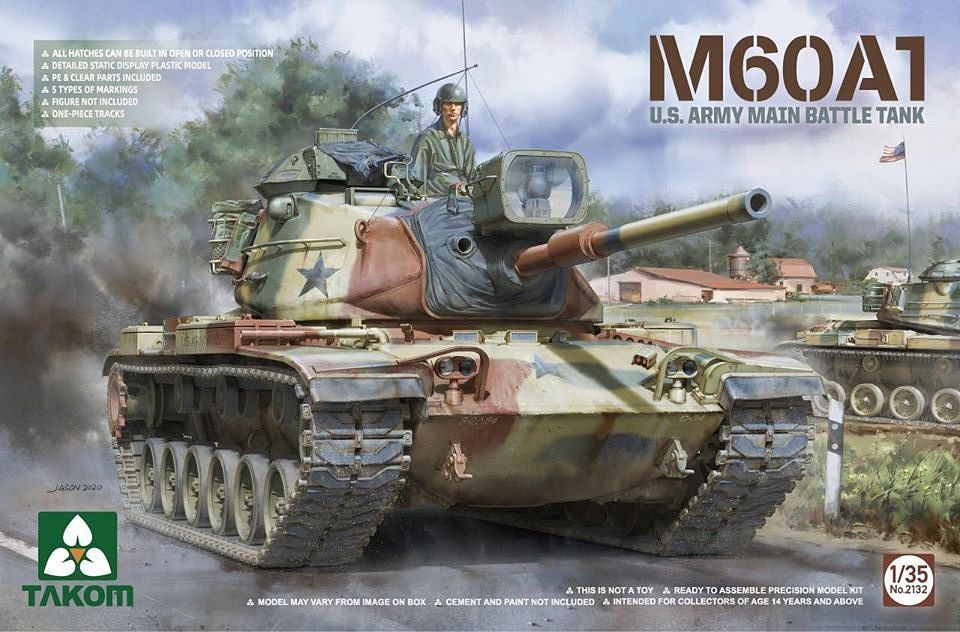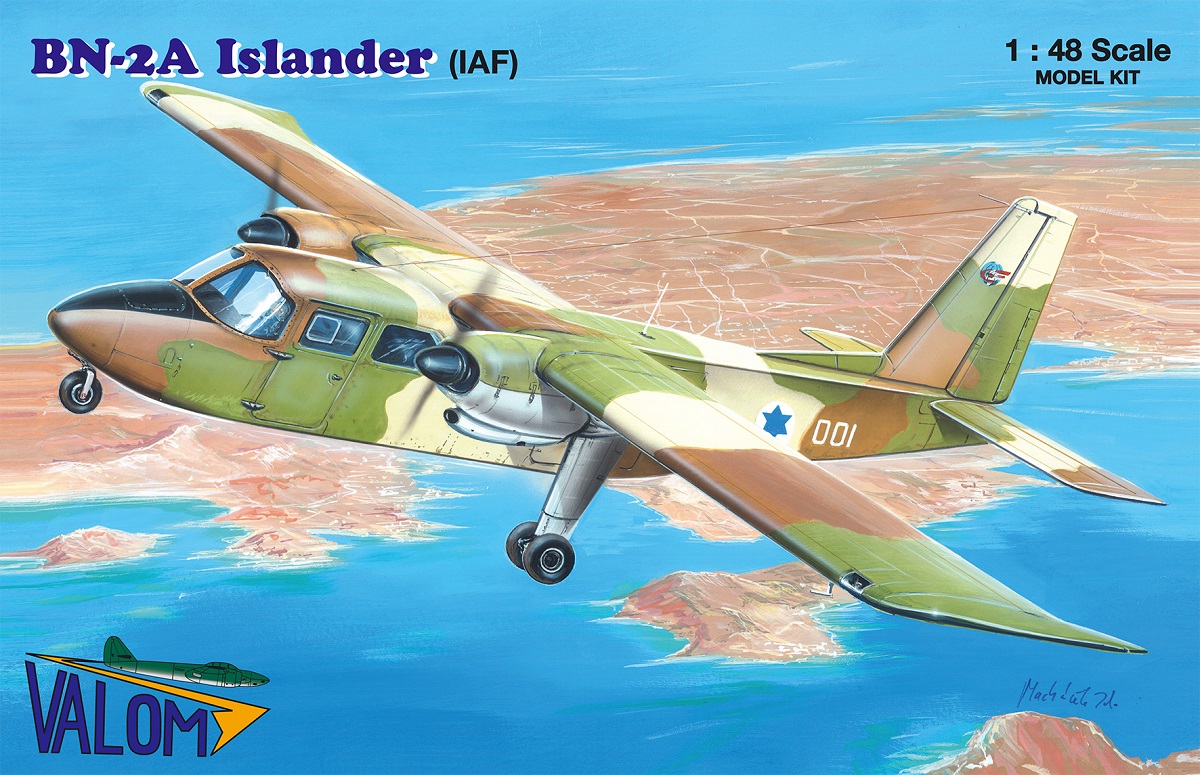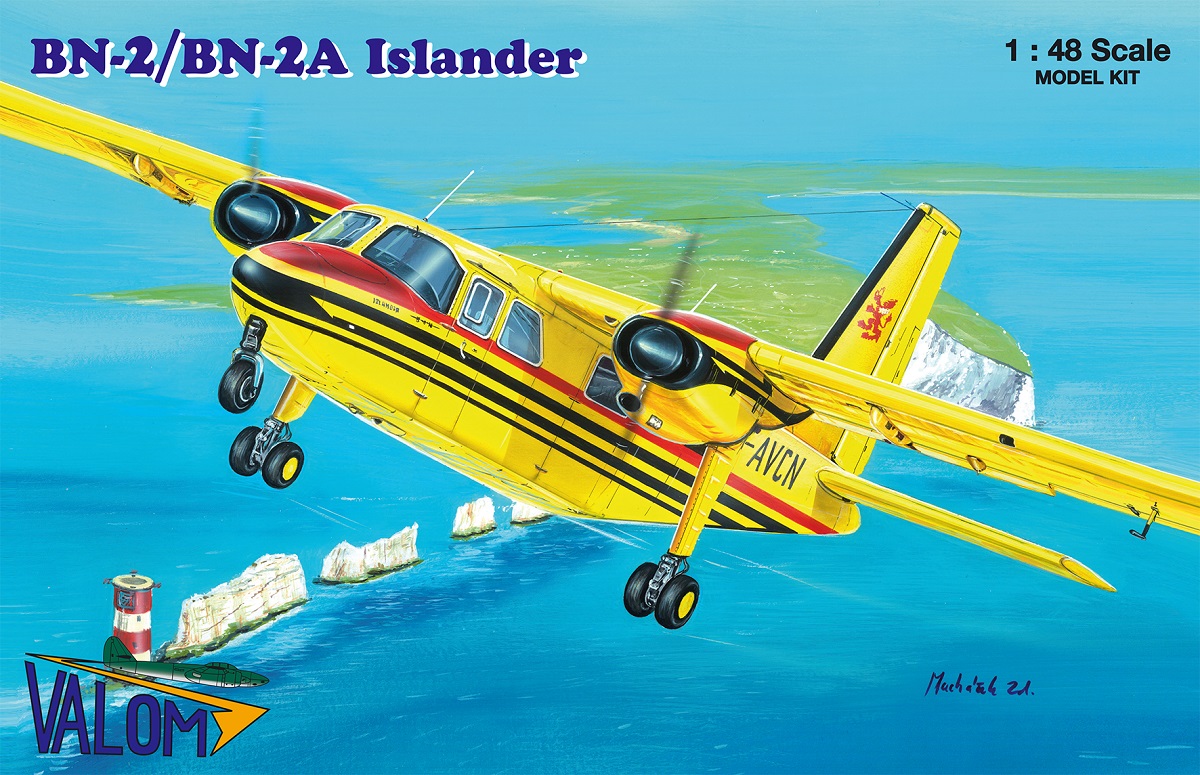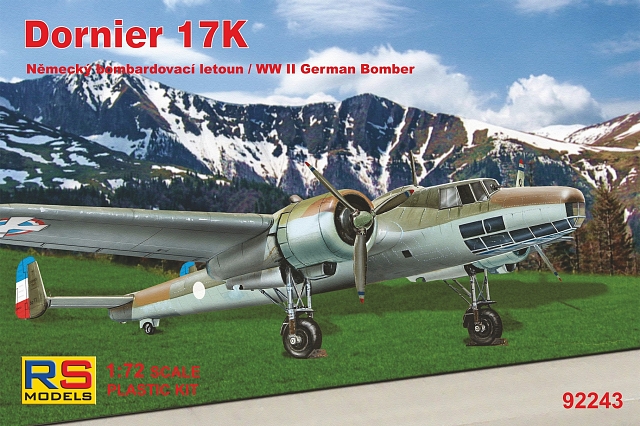Modely
Celkem 143 produktů
1/32 B-17G Flying Fortress - Late Production. Boeing B-17 Flying Fortress je čtyřmotorový těžký bombardér vyvinutý ve 30. letech 20. století pro Armádní letectvo Spojených států (USAAC). V soutěži s firmami Douglas a Martin o zakázku na stavbu 200 bombardérů předčil Boeing (prototyp Model 299/XB-17) oba konkurenty a překonal výkonnostní specifikace leteckého sboru. Přestože Boeing o zakázku přišel (ve prospěch Douglasu B-18 Bolo), protože prototyp havaroval, letecký sbor objednal dalších 13 letounů B-17 k dalšímu hodnocení. Od svého uvedení na trh v roce 1938 prošel letoun B-17 Flying Fortress řadou konstrukčních pokroků a stal se třetím nejvyráběnějším bombardérem všech dob, hned po čtyřmotorovém Consolidated B-24 Liberator a víceúčelovém dvoumotorovém Junkersu Ju 88. Letoun B-17 se stal nejprodávanějším bombardérem všech dob. B-17 byl používán především americkým letectvem v denní strategické bombardovací kampani druhé světové války proti německým průmyslovým, vojenským a civilním cílům. Osmá letecká armáda Spojených států amerických, která sídlila na mnoha letištích ve střední, východní a jižní Anglii, a patnáctá letecká armáda se základnou v Itálii doplňovaly noční plošné bombardování Velitelství bombardovacího letectva RAF v rámci kombinované bombardovací ofenzívy, aby pomohly zajistit vzdušnou převahu nad městy, továrnami a bojišti západní Evropy v rámci příprav na invazi do Francie v roce 1944. B-17 se v menší míře účastnily také války v Tichomoří na počátku druhé světové války, kde prováděly nálety na japonskou lodní dopravu a letiště. Od svého předválečného vzniku prosazovalo USAAC (do června 1941 USAAF) letoun jako strategickou zbraň; jednalo se o relativně rychlý, vysoko letící bombardér s dlouhým doletem a těžkou obrannou výzbrojí na úkor pumového zatížení. Získal si pověst odolného letounu na základě příběhů a fotografií těžce poškozených B-17, které se bezpečně vrátily na základnu. B-17 shodil více bomb než kterýkoli jiný americký letoun za druhé světové války. Z přibližně 1,5 milionu tun bomb svržených americkými letouny na nacistické Německo a jím okupovaná území bylo více než 640 000 tun svrženo z B-17. Kromě role bombardéru byl B-17 využíván také jako dopravní, protiponorkový letoun, bezpilotní letoun a pátrací a záchranný letoun. K říjnu 2019 zůstalo v letuschopném stavu devět letounů, žádný z nich však nikdy neletěl v boji. Desítky dalších jsou uskladněny nebo vystaveny na statických expozicích. Nejstarším z nich je letoun řady D, který létal v boji v Pacifiku první den druhé světové války. Nesložený a nenabarvený plastikový model. K úspěšnému dokončení této stavebnice je zapotřebí dokoupit barvy, lepidlo na plastikové modely, ředidlo, štětce, které nejsou součástí balení.
1/32 B-17G Flying Fortress - Late Production. Boeing B-17 Flying Fortress je čtyřmotorový těžký bombardér vyvinutý ve 30. letech 20. století pro Armádní letectvo Spojených států (USAAC). V soutěži s firmami Douglas a Martin o zakázku na stavbu 200 bombardérů předčil Boeing (prototyp Model 299/XB-17) oba konkurenty a překonal výkonnostní specifikace leteckého sboru. Přestože Boeing o zakázku přišel (ve prospěch Douglasu B-18 Bolo), protože prototyp havaroval, letecký sbor objednal dalších 13 letounů B-17 k dalšímu hodnocení. Od svého uvedení na trh v roce 1938 prošel letoun B-17 Flying Fortress řadou konstrukčních pokroků a stal se třetím nejvyráběnějším bombardérem všech dob, hned po čtyřmotorovém Consolidated B-24 Liberator a víceúčelovém dvoumotorovém Junkersu Ju 88. Letoun B-17 se stal nejprodávanějším bombardérem všech dob. B-17 byl používán především americkým letectvem v denní strategické bombardovací kampani druhé světové války proti německým průmyslovým, vojenským a civilním cílům. Osmá letecká armáda Spojených států amerických, která sídlila na mnoha letištích ve střední, východní a jižní Anglii, a patnáctá letecká armáda se základnou v Itálii doplňovaly noční plošné bombardování Velitelství bombardovacího letectva RAF v rámci kombinované bombardovací ofenzívy, aby pomohly zajistit vzdušnou převahu nad městy, továrnami a bojišti západní Evropy v rámci příprav na invazi do Francie v roce 1944. B-17 se v menší míře účastnily také války v Tichomoří na počátku druhé světové války, kde prováděly nálety na japonskou lodní dopravu a letiště. Od svého předválečného vzniku prosazovalo USAAC (do června 1941 USAAF) letoun jako strategickou zbraň; jednalo se o relativně rychlý, vysoko letící bombardér s dlouhým doletem a těžkou obrannou výzbrojí na úkor pumového zatížení. Získal si pověst odolného letounu na základě příběhů a fotografií těžce poškozených B-17, které se bezpečně vrátily na základnu. B-17 shodil více bomb než kterýkoli jiný americký letoun za druhé světové války. Z přibližně 1,5 milionu tun bomb svržených americkými letouny na nacistické Německo a jím okupovaná území bylo více než 640 000 tun svrženo z B-17. Kromě role bombardéru byl B-17 využíván také jako dopravní, protiponorkový letoun, bezpilotní letoun a pátrací a záchranný letoun. K říjnu 2019 zůstalo v letuschopném stavu devět letounů, žádný z nich však nikdy neletěl v boji. Desítky dalších jsou uskladněny nebo vystaveny na statických expozicích. Nejstarším z nich je letoun řady D, který létal v boji v Pacifiku první den druhé světové války. Nesložený a nenabarvený plastikový model. K úspěšnému dokončení této stavebnice je zapotřebí dokoupit barvy, lepidlo na plastikové modely, ředidlo, štětce, které nejsou součástí balení.
Plastic ModelKit loď Limited Edition 05199 - Queen Mary 2 (Platinum Edition) (1:400). Model lodi ke slepení. Velikost: 1:400; 85 cm. Balení obsahuje: 913 dílků ke slepení. Informace o modelu: Stavebnice působivé, superlativy ověnčené osobní lodě Queen Mary 2. Na svých 345 metrech délky může poskytnout luxusní ubytování více než 2500 cestujícím. • Včetně fotoleptaných kovových dílů a samolepicích dřevěných palub • Pohyblivé gondoly motorů • Zásuvné stabilizátory • Detailní bazény • Dřevěná hlavní paluba • Palubní nástavba s kapitánským můstkem • Napodobenina tenisových kurtů • Průhledné části • Precizně zpracovaná zábradlí • Vyhlídkové a záchranné čluny • Stojan pro vystavení modelu • Spousta obtisků Obsah balení Plastový model (nesestavený), ilustrovaný vícejazyčný návod na sestavení, obtisky Detaily modelu: Měřítko: 1:400 Počet dílů: 913 Délka: 850 Šířka: 102 mm Obtížnost: 5 Doporučeno pro děti od 13 let. Upozornění: Nebezpečí udušení! Výrobek obsahuje malé části. NEVHODNÉ PRO DĚTI DO 3 LET!
Plastic ModelKit loď Limited Edition 05199 - Queen Mary 2 (Platinum Edition) (1:400). Model lodi ke slepení. Velikost: 1:400; 85 cm. Balení obsahuje: 913 dílků ke slepení. Informace o modelu: Stavebnice působivé, superlativy ověnčené osobní lodě Queen Mary 2. Na svých 345 metrech délky může poskytnout luxusní ubytování více než 2500 cestujícím. • Včetně fotoleptaných kovových dílů a samolepicích dřevěných palub • Pohyblivé gondoly motorů • Zásuvné stabilizátory • Detailní bazény • Dřevěná hlavní paluba • Palubní nástavba s kapitánským můstkem • Napodobenina tenisových kurtů • Průhledné části • Precizně zpracovaná zábradlí • Vyhlídkové a záchranné čluny • Stojan pro vystavení modelu • Spousta obtisků Obsah balení Plastový model (nesestavený), ilustrovaný vícejazyčný návod na sestavení, obtisky Detaily modelu: Měřítko: 1:400 Počet dílů: 913 Délka: 850 Šířka: 102 mm Obtížnost: 5 Doporučeno pro děti od 13 let. Upozornění: Nebezpečí udušení! Výrobek obsahuje malé části. NEVHODNÉ PRO DĚTI DO 3 LET!
1/48 B-17G Flying Fortress - early production. Boeing B-17 Flying Fortress je čtyřmotorový těžký bombardér vyvinutý ve 30. letech 20. století pro Armádní letectvo Spojených států (USAAC). V soutěži s firmami Douglas a Martin o zakázku na stavbu 200 bombardérů předčil Boeing (prototyp Model 299/XB-17) oba konkurenty a překonal výkonnostní specifikace leteckého sboru. Přestože Boeing o zakázku přišel (ve prospěch Douglasu B-18 Bolo), protože prototyp havaroval, letecký sbor objednal dalších 13 letounů B-17 k dalšímu hodnocení. Od svého uvedení na trh v roce 1938 prošel letoun B-17 Flying Fortress řadou konstrukčních pokroků a stal se třetím nejvyráběnějším bombardérem všech dob, hned po čtyřmotorovém Consolidated B-24 Liberator a víceúčelovém dvoumotorovém Junkersu Ju 88. Letoun B-17 se stal nejprodávanějším bombardérem všech dob. B-17 byl používán především americkým letectvem v denní strategické bombardovací kampani druhé světové války proti německým průmyslovým, vojenským a civilním cílům. Osmá letecká armáda Spojených států amerických, která sídlila na mnoha letištích ve střední, východní a jižní Anglii, a patnáctá letecká armáda se základnou v Itálii doplňovaly noční plošné bombardování Velitelství bombardovacího letectva RAF v rámci kombinované bombardovací ofenzívy, aby pomohly zajistit vzdušnou převahu nad městy, továrnami a bojišti západní Evropy v rámci příprav na invazi do Francie v roce 1944. B-17 se v menší míře účastnily také války v Tichomoří na počátku druhé světové války, kde prováděly nálety na japonskou lodní dopravu a letiště. Od svého předválečného vzniku prosazovalo USAAC (do června 1941 USAAF) letoun jako strategickou zbraň; jednalo se o relativně rychlý, vysoko letící bombardér s dlouhým doletem a těžkou obrannou výzbrojí na úkor pumového zatížení. Získal si pověst odolného letounu na základě příběhů a fotografií těžce poškozených B-17, které se bezpečně vrátily na základnu. B-17 shodil více bomb než kterýkoli jiný americký letoun za druhé světové války. Z přibližně 1,5 milionu tun bomb svržených americkými letouny na nacistické Německo a jím okupovaná území bylo více než 640 000 tun svrženo z B-17. Kromě role bombardéru byl B-17 využíván také jako dopravní, protiponorkový letoun, bezpilotní letoun a pátrací a záchranný letoun. K říjnu 2019 zůstalo v letuschopném stavu devět letounů, žádný z nich však nikdy neletěl v boji. Desítky dalších jsou uskladněny nebo vystaveny na statických expozicích. Nejstarším z nich je letoun řady D, který létal v boji v Pacifiku první den druhé světové války. Nesložený a nenabarvený plastikový model. K úspěšnému dokončení této stavebnice je zapotřebí dokoupit barvy, lepidlo na plastikové modely, ředidlo, štětce, které nejsou součástí balení.
1/48 B-17G Flying Fortress - early production. Boeing B-17 Flying Fortress je čtyřmotorový těžký bombardér vyvinutý ve 30. letech 20. století pro Armádní letectvo Spojených států (USAAC). V soutěži s firmami Douglas a Martin o zakázku na stavbu 200 bombardérů předčil Boeing (prototyp Model 299/XB-17) oba konkurenty a překonal výkonnostní specifikace leteckého sboru. Přestože Boeing o zakázku přišel (ve prospěch Douglasu B-18 Bolo), protože prototyp havaroval, letecký sbor objednal dalších 13 letounů B-17 k dalšímu hodnocení. Od svého uvedení na trh v roce 1938 prošel letoun B-17 Flying Fortress řadou konstrukčních pokroků a stal se třetím nejvyráběnějším bombardérem všech dob, hned po čtyřmotorovém Consolidated B-24 Liberator a víceúčelovém dvoumotorovém Junkersu Ju 88. Letoun B-17 se stal nejprodávanějším bombardérem všech dob. B-17 byl používán především americkým letectvem v denní strategické bombardovací kampani druhé světové války proti německým průmyslovým, vojenským a civilním cílům. Osmá letecká armáda Spojených států amerických, která sídlila na mnoha letištích ve střední, východní a jižní Anglii, a patnáctá letecká armáda se základnou v Itálii doplňovaly noční plošné bombardování Velitelství bombardovacího letectva RAF v rámci kombinované bombardovací ofenzívy, aby pomohly zajistit vzdušnou převahu nad městy, továrnami a bojišti západní Evropy v rámci příprav na invazi do Francie v roce 1944. B-17 se v menší míře účastnily také války v Tichomoří na počátku druhé světové války, kde prováděly nálety na japonskou lodní dopravu a letiště. Od svého předválečného vzniku prosazovalo USAAC (do června 1941 USAAF) letoun jako strategickou zbraň; jednalo se o relativně rychlý, vysoko letící bombardér s dlouhým doletem a těžkou obrannou výzbrojí na úkor pumového zatížení. Získal si pověst odolného letounu na základě příběhů a fotografií těžce poškozených B-17, které se bezpečně vrátily na základnu. B-17 shodil více bomb než kterýkoli jiný americký letoun za druhé světové války. Z přibližně 1,5 milionu tun bomb svržených americkými letouny na nacistické Německo a jím okupovaná území bylo více než 640 000 tun svrženo z B-17. Kromě role bombardéru byl B-17 využíván také jako dopravní, protiponorkový letoun, bezpilotní letoun a pátrací a záchranný letoun. K říjnu 2019 zůstalo v letuschopném stavu devět letounů, žádný z nich však nikdy neletěl v boji. Desítky dalších jsou uskladněny nebo vystaveny na statických expozicích. Nejstarším z nich je letoun řady D, který létal v boji v Pacifiku první den druhé světové války. Nesložený a nenabarvený plastikový model. K úspěšnému dokončení této stavebnice je zapotřebí dokoupit barvy, lepidlo na plastikové modely, ředidlo, štětce, které nejsou součástí balení.
1/48 B-17F Flying Fortress - HK Models. Boeing B-17 Flying Fortress je čtyřmotorový těžký bombardér vyvinutý ve 30. letech 20. století pro Armádní letectvo Spojených států (USAAC). V soutěži s firmami Douglas a Martin o zakázku na stavbu 200 bombardérů předčil Boeing (prototyp Model 299/XB-17) oba konkurenty a překonal výkonnostní specifikace leteckého sboru. Přestože Boeing o zakázku přišel (ve prospěch Douglasu B-18 Bolo), protože prototyp havaroval, letecký sbor objednal dalších 13 letounů B-17 k dalšímu hodnocení. Od svého uvedení na trh v roce 1938 prošel letoun B-17 Flying Fortress řadou konstrukčních pokroků a stal se třetím nejvyráběnějším bombardérem všech dob, hned po čtyřmotorovém Consolidated B-24 Liberator a víceúčelovém dvoumotorovém Junkersu Ju 88. Letoun B-17 se stal nejprodávanějším bombardérem všech dob. B-17 byl používán především americkým letectvem v denní strategické bombardovací kampani druhé světové války proti německým průmyslovým, vojenským a civilním cílům. Osmá letecká armáda Spojených států amerických, která sídlila na mnoha letištích ve střední, východní a jižní Anglii, a patnáctá letecká armáda se základnou v Itálii doplňovaly noční plošné bombardování Velitelství bombardovacího letectva RAF v rámci kombinované bombardovací ofenzívy, aby pomohly zajistit vzdušnou převahu nad městy, továrnami a bojišti západní Evropy v rámci příprav na invazi do Francie v roce 1944. B-17 se v menší míře účastnily také války v Tichomoří na počátku druhé světové války, kde prováděly nálety na japonskou lodní dopravu a letiště. Od svého předválečného vzniku prosazovalo USAAC (do června 1941 USAAF) letoun jako strategickou zbraň; jednalo se o relativně rychlý, vysoko letící bombardér s dlouhým doletem a těžkou obrannou výzbrojí na úkor pumového zatížení. Získal si pověst odolného letounu na základě příběhů a fotografií těžce poškozených B-17, které se bezpečně vrátily na základnu. B-17 shodil více bomb než kterýkoli jiný americký letoun za druhé světové války. Z přibližně 1,5 milionu tun bomb svržených americkými letouny na nacistické Německo a jím okupovaná území bylo více než 640 000 tun svrženo z B-17. Kromě role bombardéru byl B-17 využíván také jako dopravní, protiponorkový letoun, bezpilotní letoun a pátrací a záchranný letoun. K říjnu 2019 zůstalo v letuschopném stavu devět letounů, žádný z nich však nikdy neletěl v boji. Desítky dalších jsou uskladněny nebo vystaveny na statických expozicích. Nejstarším z nich je letoun řady D, který létal v boji v Pacifiku první den druhé světové války. Nesložený a nenabarvený plastikový model. K úspěšnému dokončení této stavebnice je zapotřebí dokoupit barvy, lepidlo na plastikové modely, ředidlo, štětce, které nejsou součástí balení.
1/48 B-17F Flying Fortress - HK Models. Boeing B-17 Flying Fortress je čtyřmotorový těžký bombardér vyvinutý ve 30. letech 20. století pro Armádní letectvo Spojených států (USAAC). V soutěži s firmami Douglas a Martin o zakázku na stavbu 200 bombardérů předčil Boeing (prototyp Model 299/XB-17) oba konkurenty a překonal výkonnostní specifikace leteckého sboru. Přestože Boeing o zakázku přišel (ve prospěch Douglasu B-18 Bolo), protože prototyp havaroval, letecký sbor objednal dalších 13 letounů B-17 k dalšímu hodnocení. Od svého uvedení na trh v roce 1938 prošel letoun B-17 Flying Fortress řadou konstrukčních pokroků a stal se třetím nejvyráběnějším bombardérem všech dob, hned po čtyřmotorovém Consolidated B-24 Liberator a víceúčelovém dvoumotorovém Junkersu Ju 88. Letoun B-17 se stal nejprodávanějším bombardérem všech dob. B-17 byl používán především americkým letectvem v denní strategické bombardovací kampani druhé světové války proti německým průmyslovým, vojenským a civilním cílům. Osmá letecká armáda Spojených států amerických, která sídlila na mnoha letištích ve střední, východní a jižní Anglii, a patnáctá letecká armáda se základnou v Itálii doplňovaly noční plošné bombardování Velitelství bombardovacího letectva RAF v rámci kombinované bombardovací ofenzívy, aby pomohly zajistit vzdušnou převahu nad městy, továrnami a bojišti západní Evropy v rámci příprav na invazi do Francie v roce 1944. B-17 se v menší míře účastnily také války v Tichomoří na počátku druhé světové války, kde prováděly nálety na japonskou lodní dopravu a letiště. Od svého předválečného vzniku prosazovalo USAAC (do června 1941 USAAF) letoun jako strategickou zbraň; jednalo se o relativně rychlý, vysoko letící bombardér s dlouhým doletem a těžkou obrannou výzbrojí na úkor pumového zatížení. Získal si pověst odolného letounu na základě příběhů a fotografií těžce poškozených B-17, které se bezpečně vrátily na základnu. B-17 shodil více bomb než kterýkoli jiný americký letoun za druhé světové války. Z přibližně 1,5 milionu tun bomb svržených americkými letouny na nacistické Německo a jím okupovaná území bylo více než 640 000 tun svrženo z B-17. Kromě role bombardéru byl B-17 využíván také jako dopravní, protiponorkový letoun, bezpilotní letoun a pátrací a záchranný letoun. K říjnu 2019 zůstalo v letuschopném stavu devět letounů, žádný z nich však nikdy neletěl v boji. Desítky dalších jsou uskladněny nebo vystaveny na statických expozicích. Nejstarším z nich je letoun řady D, který létal v boji v Pacifiku první den druhé světové války. Nesložený a nenabarvený plastikový model. K úspěšnému dokončení této stavebnice je zapotřebí dokoupit barvy, lepidlo na plastikové modely, ředidlo, štětce, které nejsou součástí balení.
1/32 Fokker Dr.I Triplane "Red Baron" includes a 1/10 resin bust. More than one hundred years ago, Europe was in a state of devastation. Farms and pastures were ruined by shell craters and muddy water. Laughter in bars was replaced by people’s sobbing. Bank managers became soldiers hiding in the trenches and primary school teachers plunged bayonets into others’ chests. Everyone on the battlefield was surrounded by the angriest roars and the most vicious curses. But even in the desperate twilight, there was one gem shining brilliantly. Its brightness was so dazzling that it’s still remembered by the once warring parties. Manfred von Richthofen, the cavalry officer who learn to fly in 1915, became the top-scoring ace of World War I by winning 80 air combat victories in less than two years. His iconic red aircraft was well known to both warring parties. The Germans rejoiced in it, and the Allies were convinced by his exquisite combat skills and precious chivalry. As a legend, his death was dramatic because of the bizarre possibilities. The story of the “Red Baron” has gone across time and beyond hatred and is still being told today. The QS-002s Fokker Dr.I Triplane “Red Baron” is a limited edition product based on the MENG QS-002 Fokker Dr.I Triplane kit. This kit includes a 1/10 resin bust of the “Red Baron” Manfred von Richthofen and a Fokker Dr.I Triplane kit. This Manfred von Richthofen bust features calm and confident facial expressions. The figure wears a leather flight jacket over the Imperial German Army uniform. He wears an M1910 Officer Visor Cap on his head and a Blue Max medal on the neckline. This is the most well-known image of the “Red Baron”. This product is limited to 1,000 kits.
1/32 Fokker Dr.I Triplane "Red Baron" includes a 1/10 resin bust. More than one hundred years ago, Europe was in a state of devastation. Farms and pastures were ruined by shell craters and muddy water. Laughter in bars was replaced by people’s sobbing. Bank managers became soldiers hiding in the trenches and primary school teachers plunged bayonets into others’ chests. Everyone on the battlefield was surrounded by the angriest roars and the most vicious curses. But even in the desperate twilight, there was one gem shining brilliantly. Its brightness was so dazzling that it’s still remembered by the once warring parties. Manfred von Richthofen, the cavalry officer who learn to fly in 1915, became the top-scoring ace of World War I by winning 80 air combat victories in less than two years. His iconic red aircraft was well known to both warring parties. The Germans rejoiced in it, and the Allies were convinced by his exquisite combat skills and precious chivalry. As a legend, his death was dramatic because of the bizarre possibilities. The story of the “Red Baron” has gone across time and beyond hatred and is still being told today. The QS-002s Fokker Dr.I Triplane “Red Baron” is a limited edition product based on the MENG QS-002 Fokker Dr.I Triplane kit. This kit includes a 1/10 resin bust of the “Red Baron” Manfred von Richthofen and a Fokker Dr.I Triplane kit. This Manfred von Richthofen bust features calm and confident facial expressions. The figure wears a leather flight jacket over the Imperial German Army uniform. He wears an M1910 Officer Visor Cap on his head and a Blue Max medal on the neckline. This is the most well-known image of the “Red Baron”. This product is limited to 1,000 kits.
Plastic ModelKit loď 05230 - AIDAblu, sol, mar, stella (1:400). Model lodi ke slepení. Velikost: 1:400; 63,4 cm. Balení obsahuje: 380 dílků ke slepení. V prodeji od 17. 6. 2015. Informace o originálu: Prozkoumejte okouzlující svět těch nejkrásnějších úsměvů na širém moři! AIDA na palubách svých lodí nabízí propojení výletních plaveb, wellness pobytů, odpočinku od ruchu velkoměsta a zážitků z panenské přírody se všemi vymoženostmi luxusního plovoucího hotelu. Neomezený výběr služeb jak na palubě, tak na pobřeží, servis té nejvyšší kvality a atraktivní all-inclusive balíčky zaručují absolutní a bezvýhradnou spokojenost všech cestujících. Lodě této flotily s charakteristickými výraznými rudými rty zdobícími jejich příď patří mezi nejinovativnější a ekologicky nejšetrnější plavidla na světě. Motto společnosti „U nás bydlí úsměv“ je zároveň slibem pro její zákazníky: AIDA zkrátka rozdává štěstí na všechny strany. Informace o modelu: Kromě spousty dalších atrakcí lze na palubách podobně konstruovaných sesterských lodí AIDAblu, AIDAmar, AIDAsol a AIDAstella nalézt následující vymoženosti: - Prvotřídní zábavu v proskleném Theatriu zabírajícím celkem tři paluby - Rozlehlou sluneční palubu s LED stěnou a bazénem - Čtyři restaurace typu buffet, tři restaurace a la carte, jedenáct barů - Jedny z největších lázní na širém moři - Moderní fitness studio a otevřenou sportovní palubu - 4D-Kino, umělecké galerie a obchody - Možnost postavit jakoukoliv z lodí AIDAblu / AIDAsol / AIDAmar / AIDAstella - Dvoudílný trup se spoustou konstrukčních detailů - Imitace příďových a záďových lodních šroubů - 2 rozložitelné postranní stabilizátory - 6 zásobovacích lodí, 10 záchranných člunů, 2 motorové čluny - Jemně provedená zábradlí - Reprodukce proskleného Theatria - Konstrukční detaily slunečních palub s bazény a slunečníky - Detailně zpracovaný komín s vyraženým nápisem AIDA - Wellness sestava s nastavitelnou skleněnou kupolí - Detailně zpracovaný signální stěžeň - Stojan pro vystavení modelu - Rozsáhlá sada potisků Potřebné barvy: - základní: 05, 15, 34, 50, 83, 85, 89, 301, 310, 365 - další: 302, 382, 56, 92, 330, 147 Detaily modelu: Měřítko: 1:400 Počet dílů: 380 Délka: 634 mm Obtížnost: 5 Doporučeno pro děti od 12 let. Upozornění: Nebezpečí udušení! Výrobek obsahuje malé části. NEVHODNÉ PRO DĚTI DO 3 LET!
Plastic ModelKit loď 05230 - AIDAblu, sol, mar, stella (1:400). Model lodi ke slepení. Velikost: 1:400; 63,4 cm. Balení obsahuje: 380 dílků ke slepení. V prodeji od 17. 6. 2015. Informace o originálu: Prozkoumejte okouzlující svět těch nejkrásnějších úsměvů na širém moři! AIDA na palubách svých lodí nabízí propojení výletních plaveb, wellness pobytů, odpočinku od ruchu velkoměsta a zážitků z panenské přírody se všemi vymoženostmi luxusního plovoucího hotelu. Neomezený výběr služeb jak na palubě, tak na pobřeží, servis té nejvyšší kvality a atraktivní all-inclusive balíčky zaručují absolutní a bezvýhradnou spokojenost všech cestujících. Lodě této flotily s charakteristickými výraznými rudými rty zdobícími jejich příď patří mezi nejinovativnější a ekologicky nejšetrnější plavidla na světě. Motto společnosti „U nás bydlí úsměv“ je zároveň slibem pro její zákazníky: AIDA zkrátka rozdává štěstí na všechny strany. Informace o modelu: Kromě spousty dalších atrakcí lze na palubách podobně konstruovaných sesterských lodí AIDAblu, AIDAmar, AIDAsol a AIDAstella nalézt následující vymoženosti: - Prvotřídní zábavu v proskleném Theatriu zabírajícím celkem tři paluby - Rozlehlou sluneční palubu s LED stěnou a bazénem - Čtyři restaurace typu buffet, tři restaurace a la carte, jedenáct barů - Jedny z největších lázní na širém moři - Moderní fitness studio a otevřenou sportovní palubu - 4D-Kino, umělecké galerie a obchody - Možnost postavit jakoukoliv z lodí AIDAblu / AIDAsol / AIDAmar / AIDAstella - Dvoudílný trup se spoustou konstrukčních detailů - Imitace příďových a záďových lodních šroubů - 2 rozložitelné postranní stabilizátory - 6 zásobovacích lodí, 10 záchranných člunů, 2 motorové čluny - Jemně provedená zábradlí - Reprodukce proskleného Theatria - Konstrukční detaily slunečních palub s bazény a slunečníky - Detailně zpracovaný komín s vyraženým nápisem AIDA - Wellness sestava s nastavitelnou skleněnou kupolí - Detailně zpracovaný signální stěžeň - Stojan pro vystavení modelu - Rozsáhlá sada potisků Potřebné barvy: - základní: 05, 15, 34, 50, 83, 85, 89, 301, 310, 365 - další: 302, 382, 56, 92, 330, 147 Detaily modelu: Měřítko: 1:400 Počet dílů: 380 Délka: 634 mm Obtížnost: 5 Doporučeno pro děti od 12 let. Upozornění: Nebezpečí udušení! Výrobek obsahuje malé části. NEVHODNÉ PRO DĚTI DO 3 LET!
1/32 Nieuport XXI Russian Service. A french fighter, While it had a similar airframe to the Nieuport XVII, it was equipped with a less powerful Le Rhone 9C engine as it was originally intended as a long range escort fighter. It was also license manufactured in Russia by Dux Factory. CSM 1/32 plastic injection kit -6 plastic frets -Instruction in colour -Film for windscreen -PhotoEtch -Decals for 4 markings printed by Cartograf
1/32 Nieuport XXI Russian Service. A french fighter, While it had a similar airframe to the Nieuport XVII, it was equipped with a less powerful Le Rhone 9C engine as it was originally intended as a long range escort fighter. It was also license manufactured in Russia by Dux Factory. CSM 1/32 plastic injection kit -6 plastic frets -Instruction in colour -Film for windscreen -PhotoEtch -Decals for 4 markings printed by Cartograf
1/35 Panzer IV Ausf.J last production - full interior. The No, IV Type J tank was the final version of the No. IV tank series, and was simplified from previous versions to improve productivity. The biggest change from the H-type is the removal of the turret rotation motor and auxiliary engine for power generation; this allowed the turret to be turned manually. By removing these items and adding a fuel tank, the tank's cruising range was increased from 210km to 320km on level ground. This kit from Rye Field Model has a newly molded full interior! It also has clear parts for the turret and upper hull, in addition to the normal parts. The tracks are of the linkable assembly type, and the suspension is movable; it comes with three types of muzzle brakes, two types of guide wheels and four types of upper wheels. Photo-etched parts and decals for three versions are also included. [Includes]: Photo-etched parts, decals for 3 versions
1/35 Panzer IV Ausf.J last production - full interior. The No, IV Type J tank was the final version of the No. IV tank series, and was simplified from previous versions to improve productivity. The biggest change from the H-type is the removal of the turret rotation motor and auxiliary engine for power generation; this allowed the turret to be turned manually. By removing these items and adding a fuel tank, the tank's cruising range was increased from 210km to 320km on level ground. This kit from Rye Field Model has a newly molded full interior! It also has clear parts for the turret and upper hull, in addition to the normal parts. The tracks are of the linkable assembly type, and the suspension is movable; it comes with three types of muzzle brakes, two types of guide wheels and four types of upper wheels. Photo-etched parts and decals for three versions are also included. [Includes]: Photo-etched parts, decals for 3 versions
1/35 Sd.Kfz.184 Ferdinand & 16t Strabokran. DESCRIPTION This is an injection-plastic military vehicle model kit. From Amusing Hobby comes a 2-in-1 kit of the Ferdinand Jagdpanzer Sd.Kfz. 184 and 16t Strabokran! The characteristic feature of the Ferdinand was that it was generated by two gasoline engines and driven by an electric motor. By using a motor as the driving unit, no transmission was required. In the past, this vehicle was said to have a lot of breakdowns for this reason, but some recent documents have reported that there were fewer breakdowns than some vehicles equipped with transmissions. On the Eastern Front, the Ferdinand's appearance had a great impact. Strabokrans are gate-type mobile cranes used by German field maintenance teams during tank maintenance and repairs. About 100 units were manufactured and used in German armored divisions and heavy tank battalions. Kit features: The Ferdinand's interior layout can be enjoyed even after completion thanks to the included transparent parts. The kit recreates the precise details of the Strabokran, and it can assembled in its working state. [Mold Color]: Tan, brown [Includes]: Clear parts, photo-etched parts Release Date:Sep 2019 Item Size/Weight:39.8cm x 26.3cm x 19.5cm / 1680g
1/35 Sd.Kfz.184 Ferdinand & 16t Strabokran. DESCRIPTION This is an injection-plastic military vehicle model kit. From Amusing Hobby comes a 2-in-1 kit of the Ferdinand Jagdpanzer Sd.Kfz. 184 and 16t Strabokran! The characteristic feature of the Ferdinand was that it was generated by two gasoline engines and driven by an electric motor. By using a motor as the driving unit, no transmission was required. In the past, this vehicle was said to have a lot of breakdowns for this reason, but some recent documents have reported that there were fewer breakdowns than some vehicles equipped with transmissions. On the Eastern Front, the Ferdinand's appearance had a great impact. Strabokrans are gate-type mobile cranes used by German field maintenance teams during tank maintenance and repairs. About 100 units were manufactured and used in German armored divisions and heavy tank battalions. Kit features: The Ferdinand's interior layout can be enjoyed even after completion thanks to the included transparent parts. The kit recreates the precise details of the Strabokran, and it can assembled in its working state. [Mold Color]: Tan, brown [Includes]: Clear parts, photo-etched parts Release Date:Sep 2019 Item Size/Weight:39.8cm x 26.3cm x 19.5cm / 1680g
1/35 Sd.Kfz. 173 Pz.Jg. Jagdpanther. The Panzerjäger Panther Sd.Kfz. 173, or Jagdpanther, was a heavy tank destroyer based on the chassis of the Panzer V Panther and was armed with the same long-barreled 8.8 cm gun as the Tiger II or ‘King Tiger’, and a single 7.92 mm MG-34 machine gun in the front glacis plate for local defense. The Jagdpanther had a good power-to-weight ratio and a powerful main gun, which enabled it to destroy any Allied tank. Based on the existing Panther chassis, the vehicle did not suffer too many mechanical problems, and had an upgraded transmission and final drive to counter the Panther's main weakness. The Jagdpanther was powered by the 700hp Maybach HL230 P30 V-12 petrol engine and a 7 speed forward, 1-speed reverse transmission system with a maximum speed of 46 km/h (28.6 mph) and a range of about 200 kilometers (99 miles). It was manned by a crew of five: a driver, radio-operator, commander, gunner and a loader. Two main variants can be distinguished, the earlier (1944 model) G1 with a small internally-bolted main gun mantlet and a modified Panther A engine deck, and the later (1945 model) G2 with a larger, externally-bolted mantlet and a modified Panther G engine deck, though late G1s also had a larger mantlet. Early Jagdpanthers had two vision openings for the driver, whereas late versions had only one. The main gun originally had a monobloc gun barrel, but later versions were equipped with the PaK 43/4 gun with a two-part barrel. Early G1s (to September 1944) were given a distinctive pattern of Zimmerit anti-magnetic mine coating.
1/35 Sd.Kfz. 173 Pz.Jg. Jagdpanther. The Panzerjäger Panther Sd.Kfz. 173, or Jagdpanther, was a heavy tank destroyer based on the chassis of the Panzer V Panther and was armed with the same long-barreled 8.8 cm gun as the Tiger II or ‘King Tiger’, and a single 7.92 mm MG-34 machine gun in the front glacis plate for local defense. The Jagdpanther had a good power-to-weight ratio and a powerful main gun, which enabled it to destroy any Allied tank. Based on the existing Panther chassis, the vehicle did not suffer too many mechanical problems, and had an upgraded transmission and final drive to counter the Panther's main weakness. The Jagdpanther was powered by the 700hp Maybach HL230 P30 V-12 petrol engine and a 7 speed forward, 1-speed reverse transmission system with a maximum speed of 46 km/h (28.6 mph) and a range of about 200 kilometers (99 miles). It was manned by a crew of five: a driver, radio-operator, commander, gunner and a loader. Two main variants can be distinguished, the earlier (1944 model) G1 with a small internally-bolted main gun mantlet and a modified Panther A engine deck, and the later (1945 model) G2 with a larger, externally-bolted mantlet and a modified Panther G engine deck, though late G1s also had a larger mantlet. Early Jagdpanthers had two vision openings for the driver, whereas late versions had only one. The main gun originally had a monobloc gun barrel, but later versions were equipped with the PaK 43/4 gun with a two-part barrel. Early G1s (to September 1944) were given a distinctive pattern of Zimmerit anti-magnetic mine coating.
1/32 P-47D Thunderbolt - Super Riveting Set - Riveting Sets - Hasegawa. Package contents:1x P-47D - Riveting Set 1/32 - 3210221x P-47D Thunderbolt - Stencils + Placard - 1/32 - 2320291x P-47D Thunderbolt - Seatbelts 1/32 - 1325321x P-47D Thunderbolt - Masks 1/32 - 632420 Instructions:Convenient undercoat is Mr. Surfacer 1000 or Mr. Base White 1000.*Wipe the surface with a damp cloth, remove dust and grease.Cut the required part from riveting sheet.Remove top translucent paper and dip rivets in the warm water for approx. 15 seconds.When rivets are separated from its carrier paper apply them on the surface. We recommend to use a spot of Mr. Mark Softer.Find appropriate position and then push the liquid from below the transfer. The purpose is to get each rivet in touch with the surface.Let it dry for min. 2 hours, but optimal time could be e.g. over the night.Finally pull of the top transparent foil / film with sharp tweezers and clean the marks caused by transfer glue.* While application on coloured surfaces it is needed to make a test of adhesion and of time which is necessary for appropriate attaching of rivets. Generally the smoother surface the more time needed.
1/32 P-47D Thunderbolt - Super Riveting Set - Riveting Sets - Hasegawa. Package contents:1x P-47D - Riveting Set 1/32 - 3210221x P-47D Thunderbolt - Stencils + Placard - 1/32 - 2320291x P-47D Thunderbolt - Seatbelts 1/32 - 1325321x P-47D Thunderbolt - Masks 1/32 - 632420 Instructions:Convenient undercoat is Mr. Surfacer 1000 or Mr. Base White 1000.*Wipe the surface with a damp cloth, remove dust and grease.Cut the required part from riveting sheet.Remove top translucent paper and dip rivets in the warm water for approx. 15 seconds.When rivets are separated from its carrier paper apply them on the surface. We recommend to use a spot of Mr. Mark Softer.Find appropriate position and then push the liquid from below the transfer. The purpose is to get each rivet in touch with the surface.Let it dry for min. 2 hours, but optimal time could be e.g. over the night.Finally pull of the top transparent foil / film with sharp tweezers and clean the marks caused by transfer glue.* While application on coloured surfaces it is needed to make a test of adhesion and of time which is necessary for appropriate attaching of rivets. Generally the smoother surface the more time needed.
Plastikový model letadla 1/35 Messerschmitt Bf109 G-6 - Border Model. Typ Bf109 G byl vyvinut za méně než rok, aby nahradil zastaralý typ F, protože spojenecké síly zaváděly jeden nový letoun za druhým. Jejich cílem bylo zlepšit jeho rychlost, palebnou sílu a neprůstřelnou výbavu, prakticky využít přetlakovou kabinu a přizpůsobit jej širokému spektru misí pomocí speciálního vybavení. Díky zintenzivnění války bylo vyrobeno více než 10 000 kusů G-6, což z něj činí Bf109 s nejvyšším počtem sériově vyrobených kusů. Tato stavebnice od Border Models je zcela novým výliskem! Vyznačuje se přesnou reprodukcí motoru a interiéru. Jako bonus k prvnímu vydání bude přiložena jedna z devíti vyobrazených resinových figurek pilotů, spolu s kovovými díly a obtisky specifickými pro daného pilota! (Tyto položky jsou k dispozici pouze u prvního vydání této stavebnice; pokud vaše stavebnice tyto položky neobsahuje, nebyla součástí prvního vydání.)
Plastikový model letadla 1/35 Messerschmitt Bf109 G-6 - Border Model. Typ Bf109 G byl vyvinut za méně než rok, aby nahradil zastaralý typ F, protože spojenecké síly zaváděly jeden nový letoun za druhým. Jejich cílem bylo zlepšit jeho rychlost, palebnou sílu a neprůstřelnou výbavu, prakticky využít přetlakovou kabinu a přizpůsobit jej širokému spektru misí pomocí speciálního vybavení. Díky zintenzivnění války bylo vyrobeno více než 10 000 kusů G-6, což z něj činí Bf109 s nejvyšším počtem sériově vyrobených kusů. Tato stavebnice od Border Models je zcela novým výliskem! Vyznačuje se přesnou reprodukcí motoru a interiéru. Jako bonus k prvnímu vydání bude přiložena jedna z devíti vyobrazených resinových figurek pilotů, spolu s kovovými díly a obtisky specifickými pro daného pilota! (Tyto položky jsou k dispozici pouze u prvního vydání této stavebnice; pokud vaše stavebnice tyto položky neobsahuje, nebyla součástí prvního vydání.)
1/35 M1a2 Sep Abrams Tusk I /Tusk Ii With Full Interior. This is an injection-plastic military vehicle model kit. Rye Field Model presents a 1/35 scale kit of the U.S. main battle tank: M1A2 SEP Abrams TUSK! This two-in-one kit can be built with either the TUSK I or TUSK II specifications, and features a full interior for plenty of detail to enjoy inside and out. It features a link and length type crawler belt, and comes with 830 parts, 85 photo-etched parts, and decals for multiple marking options. Grab it today! [Mold Color]: Tan [Includes]: Photo-etched parts, decals
1/35 M1a2 Sep Abrams Tusk I /Tusk Ii With Full Interior. This is an injection-plastic military vehicle model kit. Rye Field Model presents a 1/35 scale kit of the U.S. main battle tank: M1A2 SEP Abrams TUSK! This two-in-one kit can be built with either the TUSK I or TUSK II specifications, and features a full interior for plenty of detail to enjoy inside and out. It features a link and length type crawler belt, and comes with 830 parts, 85 photo-etched parts, and decals for multiple marking options. Grab it today! [Mold Color]: Tan [Includes]: Photo-etched parts, decals
1/48 SAAB JA37 Viggen fighter. The JA37 Viggen was a Swedish medium-heavy fighter with a secondary role as attack aircraft. It was manufactured by Saab AB. The fighter version of the Viggen was the most common and recently developed of the Viggen variants. The first JA 37 Viggen was flown in 1974 and was rebuilt AJ37 Viggen with RM8A engines. The kit is CAD-produced and injection moulded. Markings for both the gray/gray livery and the intricate splinter camo are included.
1/48 SAAB JA37 Viggen fighter. The JA37 Viggen was a Swedish medium-heavy fighter with a secondary role as attack aircraft. It was manufactured by Saab AB. The fighter version of the Viggen was the most common and recently developed of the Viggen variants. The first JA 37 Viggen was flown in 1974 and was rebuilt AJ37 Viggen with RM8A engines. The kit is CAD-produced and injection moulded. Markings for both the gray/gray livery and the intricate splinter camo are included.
1/72 BHU-6B / UF-2 "Albatross" (Japan Maritime Self-Defense Force). The Beriev Be-8 (USAF/DoD reporting name “Type 33”, NATO reporting name “Mole”), was built by the Soviet Beriev OKB in 1947. It was a passenger/liaison amphibian aircraft with a layout similar to the Be-4 but substantially larger and heavier. It was a single engine parasol with the wing installed on a thin pylon and a pair of short struts. Compared to the Be-4, the Be-8 was equipped with retractable landing gear, and pilot and passenger cabins had heating utilizing engine heat. The Be-8 was intended as a civil aircraft and carried no armament. First flight was on December 3, demonstrating good performance. Two experimental aircraft were built, and one was demonstrated during 1951 Soviet Aviation Day at Tushino.One of Be-8 was equipped with hydrofoils, developed at TsAGI. These “Underwater Wings” were installed on landing gear struts and pushed aircraft above the water well before it could be done by the wing lift force. As a result, takeoff was much easier and imposed less punishment on the hull from the waves. Despite very effective during takeoff hydrofoils had negative impact on flight speed. Construction of retractable hydrofoils was not ready, and the concept did not find practical applications.
1/72 BHU-6B / UF-2 "Albatross" (Japan Maritime Self-Defense Force). The Beriev Be-8 (USAF/DoD reporting name “Type 33”, NATO reporting name “Mole”), was built by the Soviet Beriev OKB in 1947. It was a passenger/liaison amphibian aircraft with a layout similar to the Be-4 but substantially larger and heavier. It was a single engine parasol with the wing installed on a thin pylon and a pair of short struts. Compared to the Be-4, the Be-8 was equipped with retractable landing gear, and pilot and passenger cabins had heating utilizing engine heat. The Be-8 was intended as a civil aircraft and carried no armament. First flight was on December 3, demonstrating good performance. Two experimental aircraft were built, and one was demonstrated during 1951 Soviet Aviation Day at Tushino.One of Be-8 was equipped with hydrofoils, developed at TsAGI. These “Underwater Wings” were installed on landing gear struts and pushed aircraft above the water well before it could be done by the wing lift force. As a result, takeoff was much easier and imposed less punishment on the hull from the waves. Despite very effective during takeoff hydrofoils had negative impact on flight speed. Construction of retractable hydrofoils was not ready, and the concept did not find practical applications.
1/35 SHERMAN M4A3E8 with workable Track links. This is an injection-plastic military vehicle model kit. Rye Field Model presents a 1/35 scale kit of the U.S. main battle tank: M1A2 SEP V2 Abrams! This 3-in-1 kit allows you to select which specs you'd like to build your tank with from three possible types. It features link and length style tracks, and comes with 755 parts, 65 photo-etched parts, and decals for multiple marking options. Grab it today! [Mold Color]: Tan [Includes]: Photo-etched parts, decals
1/35 SHERMAN M4A3E8 with workable Track links. This is an injection-plastic military vehicle model kit. Rye Field Model presents a 1/35 scale kit of the U.S. main battle tank: M1A2 SEP V2 Abrams! This 3-in-1 kit allows you to select which specs you'd like to build your tank with from three possible types. It features link and length style tracks, and comes with 755 parts, 65 photo-etched parts, and decals for multiple marking options. Grab it today! [Mold Color]: Tan [Includes]: Photo-etched parts, decals
1/35 EXPERIMENTAL GUN TANK TYPE 5 (HO-RI II). This is an injection-plastic military vehicle model kit. The Experimental Gun Tank Type 5 (Ho-Ri II) was designed but never prototyped. Like the Ho-Ri I, it uses the body of the Type 5 Medium Tank Chi-Ri, and an aircraft gasoline engine (water-cooloed V-type 12-cylinder) was used rather than the traditional diesel engine. The Ho-Ri II also differs from the Ho-Ri 1 in its center-located battle chamber, and its vertical armor. In addition to its other armaments, it carries a pair of 20mm high-firing anti-aircraft cannon at the rear, with a ranging gun on the cupola. Order this tank for your own collection today!
1/72 Be-8 passenger amphibian aircraft. The Beriev Be-8 (USAF/DoD reporting name “Type 33”, NATO reporting name “Mole”), was built by the Soviet Beriev OKB in 1947. It was a passenger/liaison amphibian aircraft with a layout similar to the Be-4 but substantially larger and heavier. It was a single engine parasol with the wing installed on a thin pylon and a pair of short struts. Compared to the Be-4, the Be-8 was equipped with retractable landing gear, and pilot and passenger cabins had heating utilizing engine heat. The Be-8 was intended as a civil aircraft and carried no armament. First flight was on December 3, demonstrating good performance. Two experimental aircraft were built, and one was demonstrated during 1951 Soviet Aviation Day at Tushino.One of Be-8 was equipped with hydrofoils, developed at TsAGI. These “Underwater Wings” were installed on landing gear struts and pushed aircraft above the water well before it could be done by the wing lift force. As a result, takeoff was much easier and imposed less punishment on the hull from the waves. Despite very effective during takeoff hydrofoils had negative impact on flight speed. Construction of retractable hydrofoils was not ready, and the concept did not find practical applications.
1/72 Be-8 passenger amphibian aircraft. The Beriev Be-8 (USAF/DoD reporting name “Type 33”, NATO reporting name “Mole”), was built by the Soviet Beriev OKB in 1947. It was a passenger/liaison amphibian aircraft with a layout similar to the Be-4 but substantially larger and heavier. It was a single engine parasol with the wing installed on a thin pylon and a pair of short struts. Compared to the Be-4, the Be-8 was equipped with retractable landing gear, and pilot and passenger cabins had heating utilizing engine heat. The Be-8 was intended as a civil aircraft and carried no armament. First flight was on December 3, demonstrating good performance. Two experimental aircraft were built, and one was demonstrated during 1951 Soviet Aviation Day at Tushino.One of Be-8 was equipped with hydrofoils, developed at TsAGI. These “Underwater Wings” were installed on landing gear struts and pushed aircraft above the water well before it could be done by the wing lift force. As a result, takeoff was much easier and imposed less punishment on the hull from the waves. Despite very effective during takeoff hydrofoils had negative impact on flight speed. Construction of retractable hydrofoils was not ready, and the concept did not find practical applications.
1/72 Be-8 amphibian aircraft (with water skis & hydrofoils). The Beriev Be-8 (USAF/DoD reporting name “Type 33”, NATO reporting name “Mole”), was built by the Soviet Beriev OKB in 1947. It was a passenger/liaison amphibian aircraft with a layout similar to the Be-4 but substantially larger and heavier. It was a single engine parasol with the wing installed on a thin pylon and a pair of short struts. Compared to the Be-4, the Be-8 was equipped with retractable landing gear, and pilot and passenger cabins had heating utilizing engine heat. The Be-8 was intended as a civil aircraft and carried no armament. First flight was on December 3, demonstrating good performance. Two experimental aircraft were built, and one was demonstrated during 1951 Soviet Aviation Day at Tushino.One of Be-8 was equipped with hydrofoils, developed at TsAGI. These “Underwater Wings” were installed on landing gear struts and pushed aircraft above the water well before it could be done by the wing lift force. As a result, takeoff was much easier and imposed less punishment on the hull from the waves. Despite very effective during takeoff hydrofoils had negative impact on flight speed. Construction of retractable hydrofoils was not ready, and the concept did not find practical applications.
1/35 EXPERIMENTAL GUN TANK TYPE 5 (HO-RI II). This is an injection-plastic military vehicle model kit. The Experimental Gun Tank Type 5 (Ho-Ri II) was designed but never prototyped. Like the Ho-Ri I, it uses the body of the Type 5 Medium Tank Chi-Ri, and an aircraft gasoline engine (water-cooloed V-type 12-cylinder) was used rather than the traditional diesel engine. The Ho-Ri II also differs from the Ho-Ri 1 in its center-located battle chamber, and its vertical armor. In addition to its other armaments, it carries a pair of 20mm high-firing anti-aircraft cannon at the rear, with a ranging gun on the cupola. Order this tank for your own collection today!
1/72 Be-8 amphibian aircraft (with water skis & hydrofoils). The Beriev Be-8 (USAF/DoD reporting name “Type 33”, NATO reporting name “Mole”), was built by the Soviet Beriev OKB in 1947. It was a passenger/liaison amphibian aircraft with a layout similar to the Be-4 but substantially larger and heavier. It was a single engine parasol with the wing installed on a thin pylon and a pair of short struts. Compared to the Be-4, the Be-8 was equipped with retractable landing gear, and pilot and passenger cabins had heating utilizing engine heat. The Be-8 was intended as a civil aircraft and carried no armament. First flight was on December 3, demonstrating good performance. Two experimental aircraft were built, and one was demonstrated during 1951 Soviet Aviation Day at Tushino.One of Be-8 was equipped with hydrofoils, developed at TsAGI. These “Underwater Wings” were installed on landing gear struts and pushed aircraft above the water well before it could be done by the wing lift force. As a result, takeoff was much easier and imposed less punishment on the hull from the waves. Despite very effective during takeoff hydrofoils had negative impact on flight speed. Construction of retractable hydrofoils was not ready, and the concept did not find practical applications.
1/35 WWII MEDIUM TANK PANTHER II RHEINMETALL TURRET. This is an injection-plastic military vehicle model kit. Another interesting late war German Paper Panther on the way from Amusing Hobby! The Panther II, as the name implies, was the follow up design to the German Panther tank, but it never progressed beyond prototypes and designs. The Rheinmetall company finished the Panther II's turret design in March 1944. It was smaller than conventional turrets and featured a slanted upper surface to make up for the stereo side equipment. Be sure to add this unique kit to your armor lineup!
1/35 WWII MEDIUM TANK PANTHER II RHEINMETALL TURRET. This is an injection-plastic military vehicle model kit. Another interesting late war German Paper Panther on the way from Amusing Hobby! The Panther II, as the name implies, was the follow up design to the German Panther tank, but it never progressed beyond prototypes and designs. The Rheinmetall company finished the Panther II's turret design in March 1944. It was smaller than conventional turrets and featured a slanted upper surface to make up for the stereo side equipment. Be sure to add this unique kit to your armor lineup!
1/35 Bergepanzer Tiger I. This is an injection-plastic military vehicle model kit. Rye Field Model presents a 1/35 scale kit of the U.S. main battle tank: M1A2 SEP Abrams TUSK! This two-in-one kit can be built with either the TUSK I or TUSK II specifications, and features a full interior for plenty of detail to enjoy inside and out. It features a link and length type crawler belt, and comes with 830 parts, 85 photo-etched parts, and decals for multiple marking options. Grab it today! [Mold Color]: Tan [Includes]: Photo-etched parts, decals
1/35 Sturmtiger Rm61 L/5.4/38cm W/Workable Track Links. This is an injection-plastic military vehicle model kit. The Sturmtiger was a self-propelled artillery developed by Germany in World War II. This tank remodeled the chassis of the Tiger I, and it was equipped with a 38cm rocket mortar originally developed for the German Navy. Only 18 of this tank were produced. Interior parts are limited to parts inside the battle room; parts such as the engine, radiator fan, and transmission are not included. The track links are movable, and photo-etched parts are included, as are decals for 3 markings versions. [Includes]: Photo-etched parts, decals for 3 versions
1/35 Bergepanzer Tiger I. This is an injection-plastic military vehicle model kit. Rye Field Model presents a 1/35 scale kit of the U.S. main battle tank: M1A2 SEP Abrams TUSK! This two-in-one kit can be built with either the TUSK I or TUSK II specifications, and features a full interior for plenty of detail to enjoy inside and out. It features a link and length type crawler belt, and comes with 830 parts, 85 photo-etched parts, and decals for multiple marking options. Grab it today! [Mold Color]: Tan [Includes]: Photo-etched parts, decals
1/35 Sturmtiger Rm61 L/5.4/38cm W/Workable Track Links. This is an injection-plastic military vehicle model kit. The Sturmtiger was a self-propelled artillery developed by Germany in World War II. This tank remodeled the chassis of the Tiger I, and it was equipped with a 38cm rocket mortar originally developed for the German Navy. Only 18 of this tank were produced. Interior parts are limited to parts inside the battle room; parts such as the engine, radiator fan, and transmission are not included. The track links are movable, and photo-etched parts are included, as are decals for 3 markings versions. [Includes]: Photo-etched parts, decals for 3 versions
1/48 SAAB B17B - The first SAAB aircraft. The first SAAB designed and built aircraft was initially an ASJA (SAAB’s predecessor) project called the L-10, a reconnaissance aircraft. When ASJA was merged with SAAB, the airplane was named SAAB 17. It was now also intended as a dive bomber. As the European continent was thrown into war, the lack of engines forced three different versions of the SAAB 17 to be developed; the 17A with Pratt & Whitney Twin Wasp, the 17B with Bristol Mercury XXIV and the 17C with Piaggio P. XIbis R.C.40D. The first prototype flew on May 18 1940 and two years later deliveries commenced.
1/48 SAAB B17B - The first SAAB aircraft. The first SAAB designed and built aircraft was initially an ASJA (SAAB’s predecessor) project called the L-10, a reconnaissance aircraft. When ASJA was merged with SAAB, the airplane was named SAAB 17. It was now also intended as a dive bomber. As the European continent was thrown into war, the lack of engines forced three different versions of the SAAB 17 to be developed; the 17A with Pratt & Whitney Twin Wasp, the 17B with Bristol Mercury XXIV and the 17C with Piaggio P. XIbis R.C.40D. The first prototype flew on May 18 1940 and two years later deliveries commenced.
1/35 M60A1 Patton U.S. Army Main Battle Tank. The M60 is a main battle tank developed by the United States as a successor to the M46, M47, and M48 in order to combat the new T-54A tank fielded by the Soviet Union. The M60A1 tank is an improved mass-produced version of the M60, with production beginning in 1960, four years after the prototype of the original M60 was completed. The turret was changed from the M60's "turtleshell" shape to a thicker shape with front armor and a wider internal volume. The tank's excellent maneuverability, powerful engine and 105mm tank gun L7A1 made it an excellent tank with a good balance of offense and defense; it has become the standard main battle tank for the U.S. military and other Western countries. About 20,000 of this tank have been made, and it has become the best-selling tank. Takom's kit features a main hatch that opens and closes after assembly, with crawler belt tracks, clear and photo-etched parts, and markings for five versions. Please note that figures are not included. [Includes]: Clear parts, photo-etched parts, markings for 5 versions
1/35 M60A1 Patton U.S. Army Main Battle Tank. The M60 is a main battle tank developed by the United States as a successor to the M46, M47, and M48 in order to combat the new T-54A tank fielded by the Soviet Union. The M60A1 tank is an improved mass-produced version of the M60, with production beginning in 1960, four years after the prototype of the original M60 was completed. The turret was changed from the M60's "turtleshell" shape to a thicker shape with front armor and a wider internal volume. The tank's excellent maneuverability, powerful engine and 105mm tank gun L7A1 made it an excellent tank with a good balance of offense and defense; it has become the standard main battle tank for the U.S. military and other Western countries. About 20,000 of this tank have been made, and it has become the best-selling tank. Takom's kit features a main hatch that opens and closes after assembly, with crawler belt tracks, clear and photo-etched parts, and markings for five versions. Please note that figures are not included. [Includes]: Clear parts, photo-etched parts, markings for 5 versions
1/72 KDA-2 type 88-2 scout. The Beriev Be-8 (USAF/DoD reporting name “Type 33”, NATO reporting name “Mole”), was built by the Soviet Beriev OKB in 1947. It was a passenger/liaison amphibian aircraft with a layout similar to the Be-4 but substantially larger and heavier. It was a single engine parasol with the wing installed on a thin pylon and a pair of short struts. Compared to the Be-4, the Be-8 was equipped with retractable landing gear, and pilot and passenger cabins had heating utilizing engine heat. The Be-8 was intended as a civil aircraft and carried no armament. First flight was on December 3, demonstrating good performance. Two experimental aircraft were built, and one was demonstrated during 1951 Soviet Aviation Day at Tushino.One of Be-8 was equipped with hydrofoils, developed at TsAGI. These “Underwater Wings” were installed on landing gear struts and pushed aircraft above the water well before it could be done by the wing lift force. As a result, takeoff was much easier and imposed less punishment on the hull from the waves. Despite very effective during takeoff hydrofoils had negative impact on flight speed. Construction of retractable hydrofoils was not ready, and the concept did not find practical applications.
1/72 KDA-2 type 88 light bomber. The Beriev Be-8 (USAF/DoD reporting name “Type 33”, NATO reporting name “Mole”), was built by the Soviet Beriev OKB in 1947. It was a passenger/liaison amphibian aircraft with a layout similar to the Be-4 but substantially larger and heavier. It was a single engine parasol with the wing installed on a thin pylon and a pair of short struts. Compared to the Be-4, the Be-8 was equipped with retractable landing gear, and pilot and passenger cabins had heating utilizing engine heat. The Be-8 was intended as a civil aircraft and carried no armament. First flight was on December 3, demonstrating good performance. Two experimental aircraft were built, and one was demonstrated during 1951 Soviet Aviation Day at Tushino.One of Be-8 was equipped with hydrofoils, developed at TsAGI. These “Underwater Wings” were installed on landing gear struts and pushed aircraft above the water well before it could be done by the wing lift force. As a result, takeoff was much easier and imposed less punishment on the hull from the waves. Despite very effective during takeoff hydrofoils had negative impact on flight speed. Construction of retractable hydrofoils was not ready, and the concept did not find practical applications.
1/72 KDA-2 type 88-1 scout. The Beriev Be-8 (USAF/DoD reporting name “Type 33”, NATO reporting name “Mole”), was built by the Soviet Beriev OKB in 1947. It was a passenger/liaison amphibian aircraft with a layout similar to the Be-4 but substantially larger and heavier. It was a single engine parasol with the wing installed on a thin pylon and a pair of short struts. Compared to the Be-4, the Be-8 was equipped with retractable landing gear, and pilot and passenger cabins had heating utilizing engine heat. The Be-8 was intended as a civil aircraft and carried no armament. First flight was on December 3, demonstrating good performance. Two experimental aircraft were built, and one was demonstrated during 1951 Soviet Aviation Day at Tushino.One of Be-8 was equipped with hydrofoils, developed at TsAGI. These “Underwater Wings” were installed on landing gear struts and pushed aircraft above the water well before it could be done by the wing lift force. As a result, takeoff was much easier and imposed less punishment on the hull from the waves. Despite very effective during takeoff hydrofoils had negative impact on flight speed. Construction of retractable hydrofoils was not ready, and the concept did not find practical applications.
1/72 KDA-2 type 88 light bomber. The Beriev Be-8 (USAF/DoD reporting name “Type 33”, NATO reporting name “Mole”), was built by the Soviet Beriev OKB in 1947. It was a passenger/liaison amphibian aircraft with a layout similar to the Be-4 but substantially larger and heavier. It was a single engine parasol with the wing installed on a thin pylon and a pair of short struts. Compared to the Be-4, the Be-8 was equipped with retractable landing gear, and pilot and passenger cabins had heating utilizing engine heat. The Be-8 was intended as a civil aircraft and carried no armament. First flight was on December 3, demonstrating good performance. Two experimental aircraft were built, and one was demonstrated during 1951 Soviet Aviation Day at Tushino.One of Be-8 was equipped with hydrofoils, developed at TsAGI. These “Underwater Wings” were installed on landing gear struts and pushed aircraft above the water well before it could be done by the wing lift force. As a result, takeoff was much easier and imposed less punishment on the hull from the waves. Despite very effective during takeoff hydrofoils had negative impact on flight speed. Construction of retractable hydrofoils was not ready, and the concept did not find practical applications.
1/72 KDA-2 type 88-1 scout. The Beriev Be-8 (USAF/DoD reporting name “Type 33”, NATO reporting name “Mole”), was built by the Soviet Beriev OKB in 1947. It was a passenger/liaison amphibian aircraft with a layout similar to the Be-4 but substantially larger and heavier. It was a single engine parasol with the wing installed on a thin pylon and a pair of short struts. Compared to the Be-4, the Be-8 was equipped with retractable landing gear, and pilot and passenger cabins had heating utilizing engine heat. The Be-8 was intended as a civil aircraft and carried no armament. First flight was on December 3, demonstrating good performance. Two experimental aircraft were built, and one was demonstrated during 1951 Soviet Aviation Day at Tushino.One of Be-8 was equipped with hydrofoils, developed at TsAGI. These “Underwater Wings” were installed on landing gear struts and pushed aircraft above the water well before it could be done by the wing lift force. As a result, takeoff was much easier and imposed less punishment on the hull from the waves. Despite very effective during takeoff hydrofoils had negative impact on flight speed. Construction of retractable hydrofoils was not ready, and the concept did not find practical applications.
1/72 KDA-2 type 88-2 scout. The Beriev Be-8 (USAF/DoD reporting name “Type 33”, NATO reporting name “Mole”), was built by the Soviet Beriev OKB in 1947. It was a passenger/liaison amphibian aircraft with a layout similar to the Be-4 but substantially larger and heavier. It was a single engine parasol with the wing installed on a thin pylon and a pair of short struts. Compared to the Be-4, the Be-8 was equipped with retractable landing gear, and pilot and passenger cabins had heating utilizing engine heat. The Be-8 was intended as a civil aircraft and carried no armament. First flight was on December 3, demonstrating good performance. Two experimental aircraft were built, and one was demonstrated during 1951 Soviet Aviation Day at Tushino.One of Be-8 was equipped with hydrofoils, developed at TsAGI. These “Underwater Wings” were installed on landing gear struts and pushed aircraft above the water well before it could be done by the wing lift force. As a result, takeoff was much easier and imposed less punishment on the hull from the waves. Despite very effective during takeoff hydrofoils had negative impact on flight speed. Construction of retractable hydrofoils was not ready, and the concept did not find practical applications.
1/48 Britten-Norman BN-2A Islander (IAF). This is an injection-plastic aircraft model kit. This beautifully detailed kit of the Britten-Norman BN-2A Islander is an entirely new mold! The prototype of this general-purpose aircraft made its first flight in 1965, and it is used by more than 500 airlines in more than 120 countries; it is still being produced (with some changes to the engine) after more than 50 years! This particular aircraft was used by more than 10 airlines, including New Japan Airlines, Daiichi Aviation, and Ryukyu Air Commuter in Japan. Includes photo-etched parts and decals for 2 versions; will be about 22.6cm long with a wingspan of 31.1cm when completed. [Mold Color]: Brown, clear [Includes]: Decals, photo-etched parts
1/48 Britten-Norman BN-2/BN-2A Islander. This is an injection-plastic aircraft model kit. This beautifully detailed kit of the Britten-Norman BN-2A Islander is an entirely new mold! The prototype of this general-purpose aircraft made its first flight in 1965, and it is used by more than 500 airlines in more than 120 countries; it is still being produced (with some changes to the engine) after more than 50 years! This particular aircraft was used by more than 10 airlines, including New Japan Airlines, Daiichi Aviation, and Ryukyu Air Commuter in Japan. Includes photo-etched parts and decals for 2 versions; will be about 22.6cm long with a wingspan of 31.1cm when completed. [Mold Color]: Brown, clear [Includes]: Decals, photo-etched parts
1/48 Britten-Norman BN-2A Islander (IAF). This is an injection-plastic aircraft model kit. This beautifully detailed kit of the Britten-Norman BN-2A Islander is an entirely new mold! The prototype of this general-purpose aircraft made its first flight in 1965, and it is used by more than 500 airlines in more than 120 countries; it is still being produced (with some changes to the engine) after more than 50 years! This particular aircraft was used by more than 10 airlines, including New Japan Airlines, Daiichi Aviation, and Ryukyu Air Commuter in Japan. Includes photo-etched parts and decals for 2 versions; will be about 22.6cm long with a wingspan of 31.1cm when completed. [Mold Color]: Brown, clear [Includes]: Decals, photo-etched parts
1/48 Britten-Norman BN-2/BN-2A Islander. This is an injection-plastic aircraft model kit. This beautifully detailed kit of the Britten-Norman BN-2A Islander is an entirely new mold! The prototype of this general-purpose aircraft made its first flight in 1965, and it is used by more than 500 airlines in more than 120 countries; it is still being produced (with some changes to the engine) after more than 50 years! This particular aircraft was used by more than 10 airlines, including New Japan Airlines, Daiichi Aviation, and Ryukyu Air Commuter in Japan. Includes photo-etched parts and decals for 2 versions; will be about 22.6cm long with a wingspan of 31.1cm when completed. [Mold Color]: Brown, clear [Includes]: Decals, photo-etched parts
Plastikový model letadla 1/72 Dornier 17 K 4 decal v. for Yugoslavia, Hungary, Bulgaria. 4 decal variants1. Do-17 Ka-1, 209 eskadrila, Skoplje, June 19402. Do-17 Ka-2, 1. Önálló távolfeldelritö ostzály, Ferihegy3. Do-17 Ka-1, Mostarska eskadrila, Rajlovac, May 19454. Do-17 Ka, 5th Bomber Regiment, Bulgarian AF, 1941-42After seeing the Do 17 M V1 at the Zürich air races in 1937, the Yugoslavian Air Force bought licence rights for production at the DFA factory in 1938. They equipped it with the more powerful Gnome-Rhône 14N radial engines and added a Hispano 20 mm cannon and three 7.92 mm Browning machine guns. Three variants were built in Yugoslavia. The first being the Do 17Kb-1 bomber aircraft and the second was the Do 17Ka-2 reconnaissance aircraft. The final variant was the Do 17Ka-3 reconnaissance aircraft.
